PASO DEL NORTE 2021 -

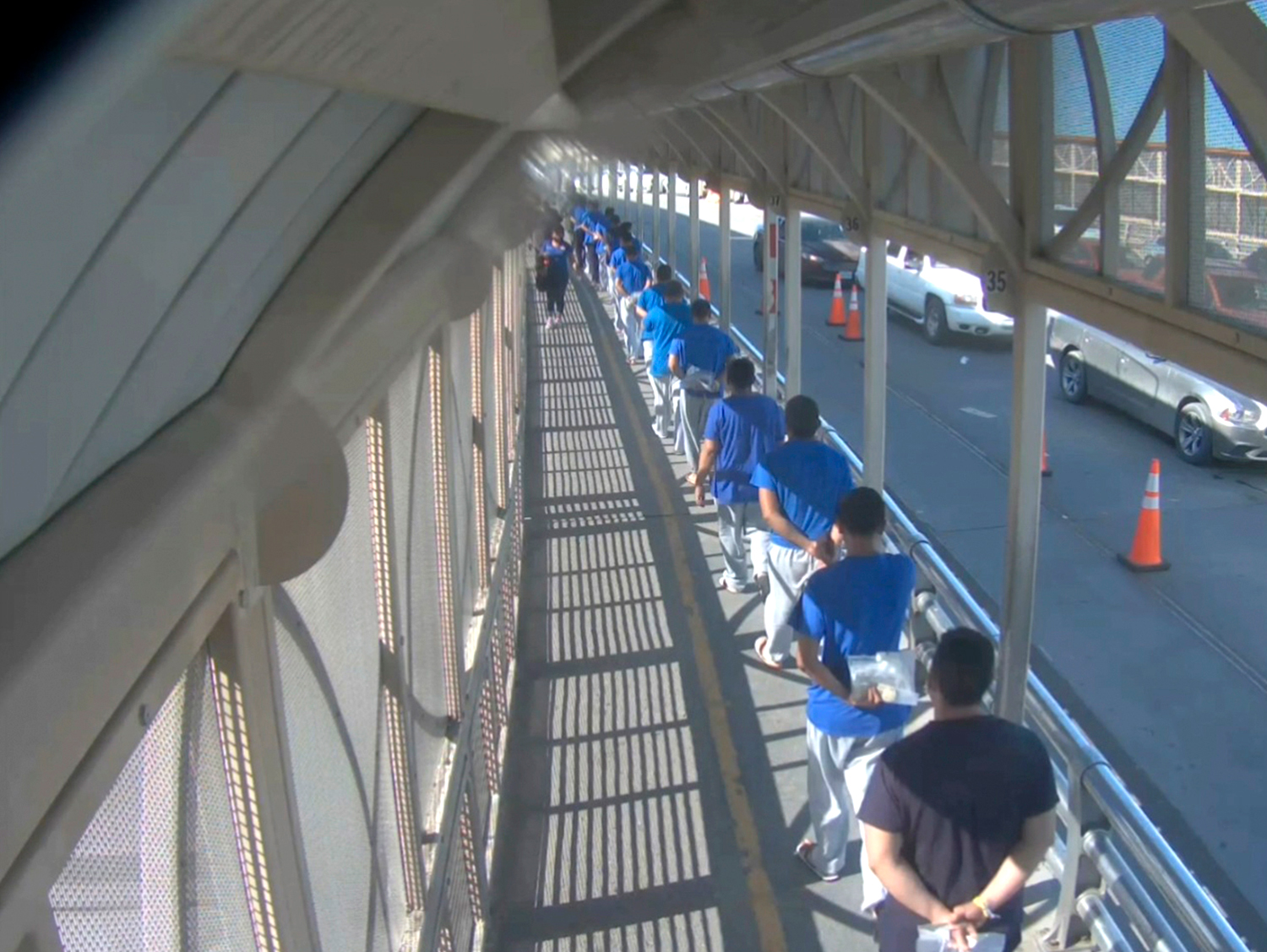
Since 2021, I have been recording and monitoring public livestream cameras installed at the Paso del Norte International Bridge, which connects Ciudad Juárez, Mexico, with El Paso, Texas. These cameras operate continuously, framing both the everyday rhythm of the crossing and the moments of tension that define it.
On March 12, 2023, hundreds of migrants attempted to cross the bridge by force. I happened to be watching the livestream as it unfolded. The feed showed a large crowd moving toward the border, officials closing the gates, and then—suddenly—the image cutting back to its usual scene of traffic and pedestrians. Because these cameras do not archive footage, that moment disappeared as soon as it happened.
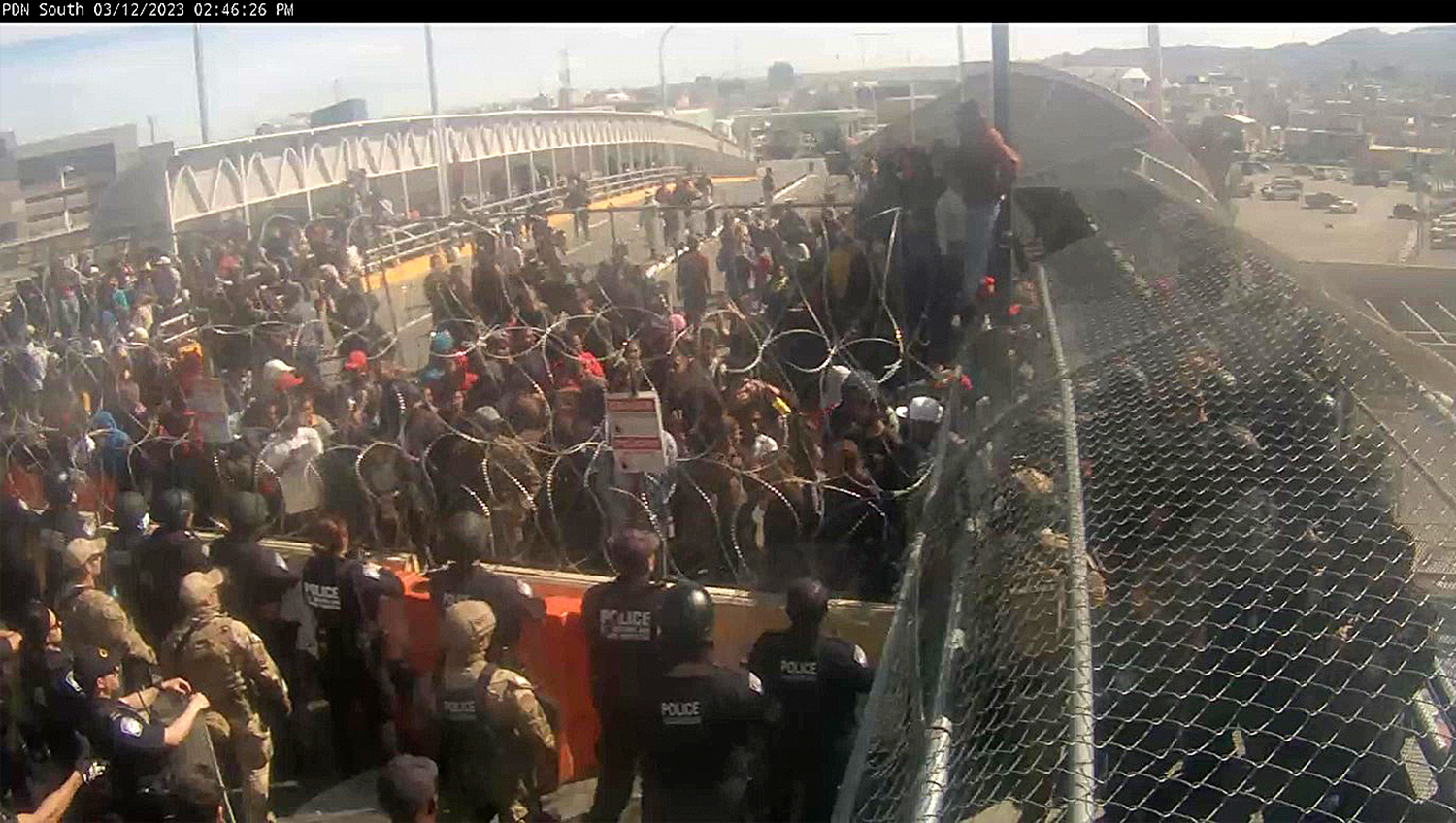
This project began from that realization: that border events appear and vanish in real time, visible only to whoever happens to be watching. By capturing screenshots, data fragments, and interruptions in the feed, I try to hold onto what surveillance itself refuses to preserve.
NASA
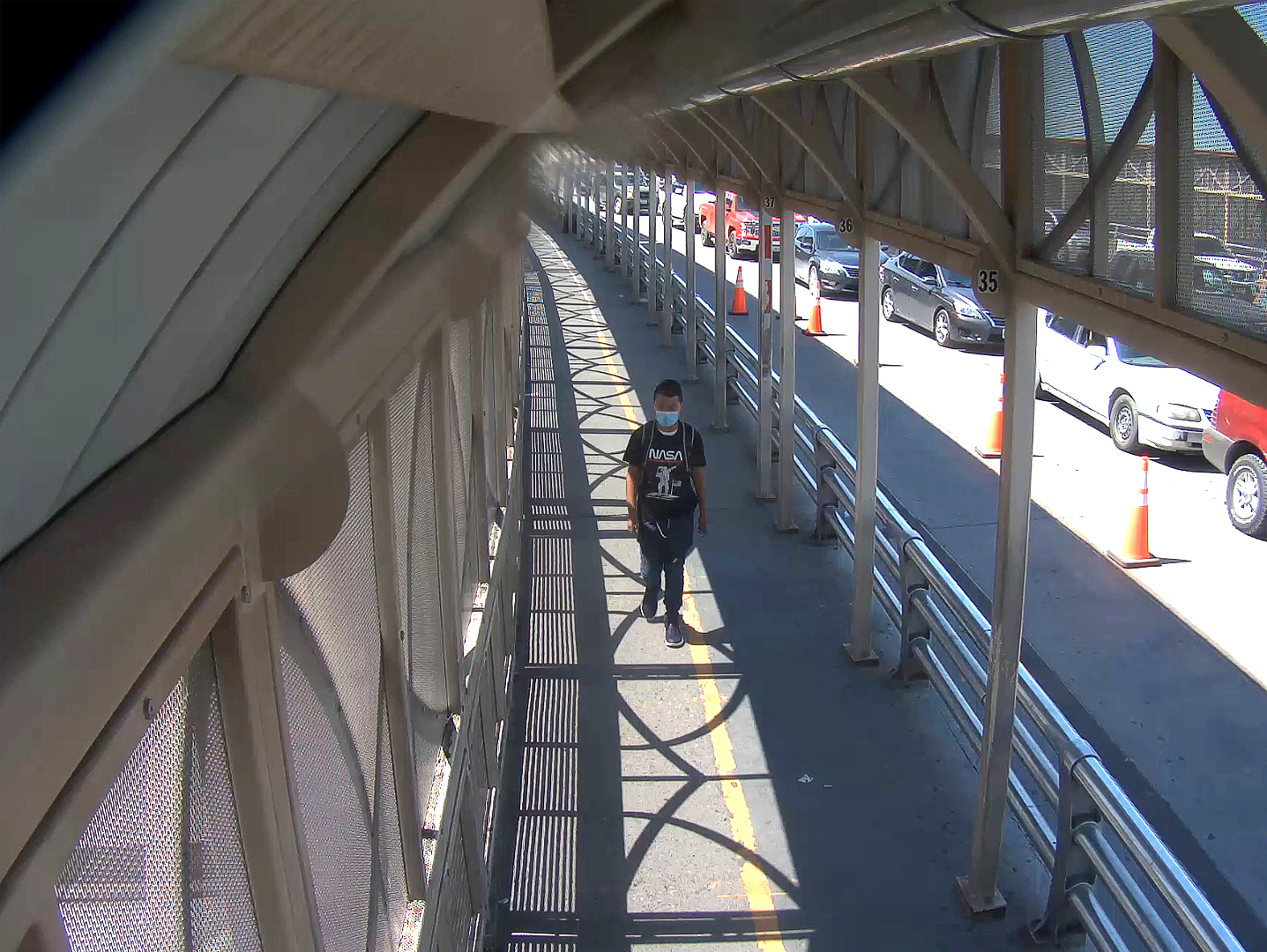
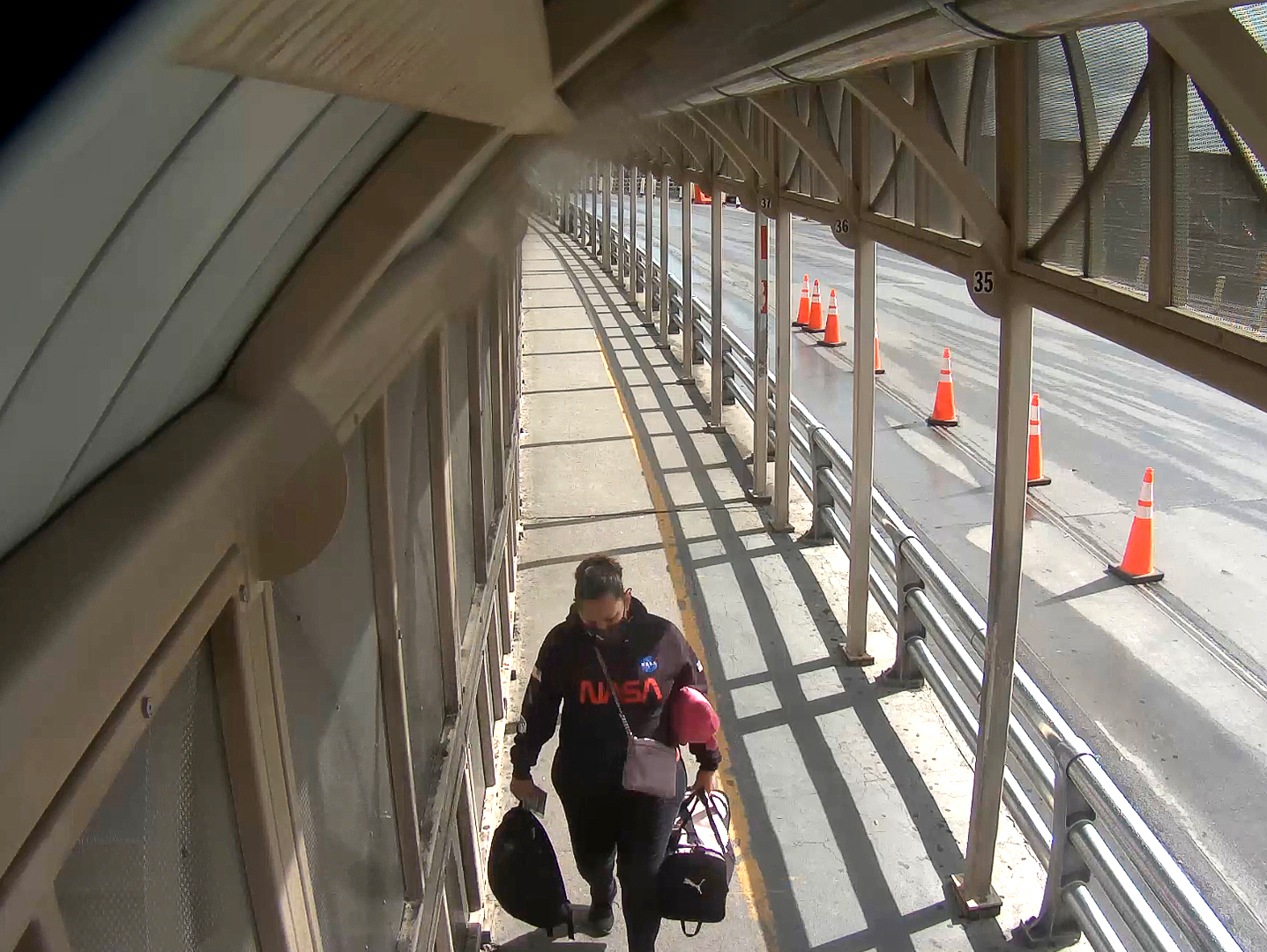
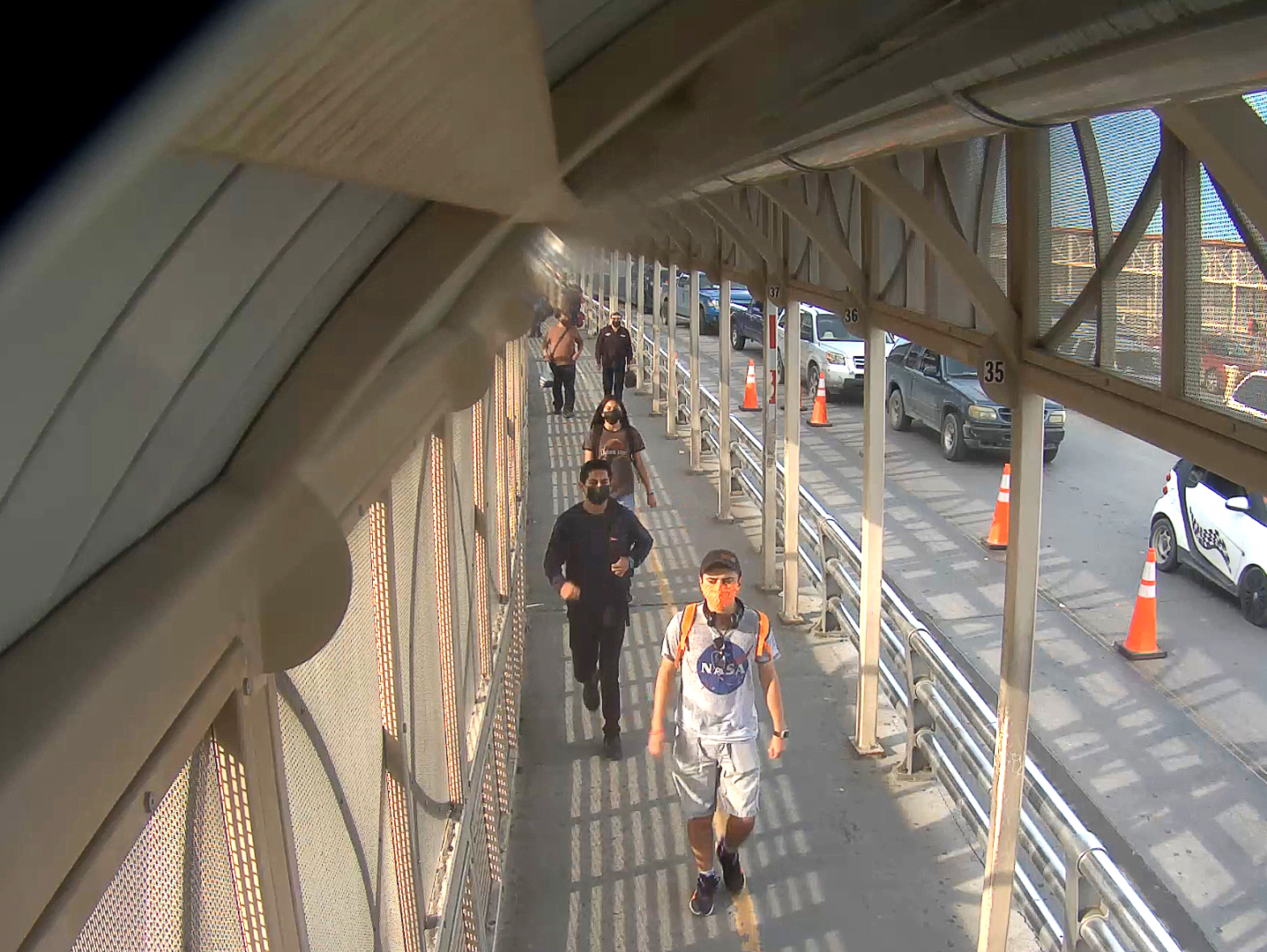
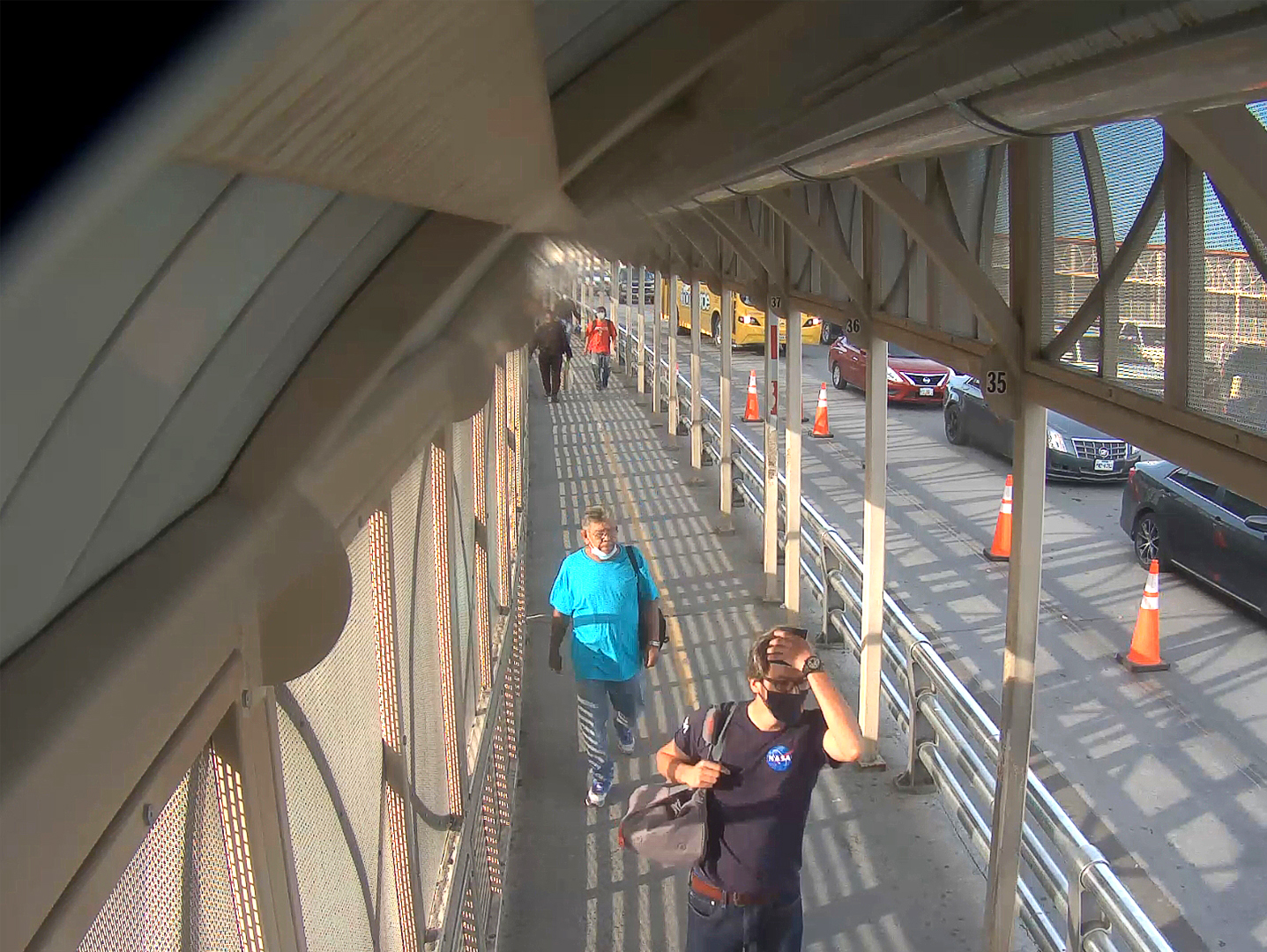
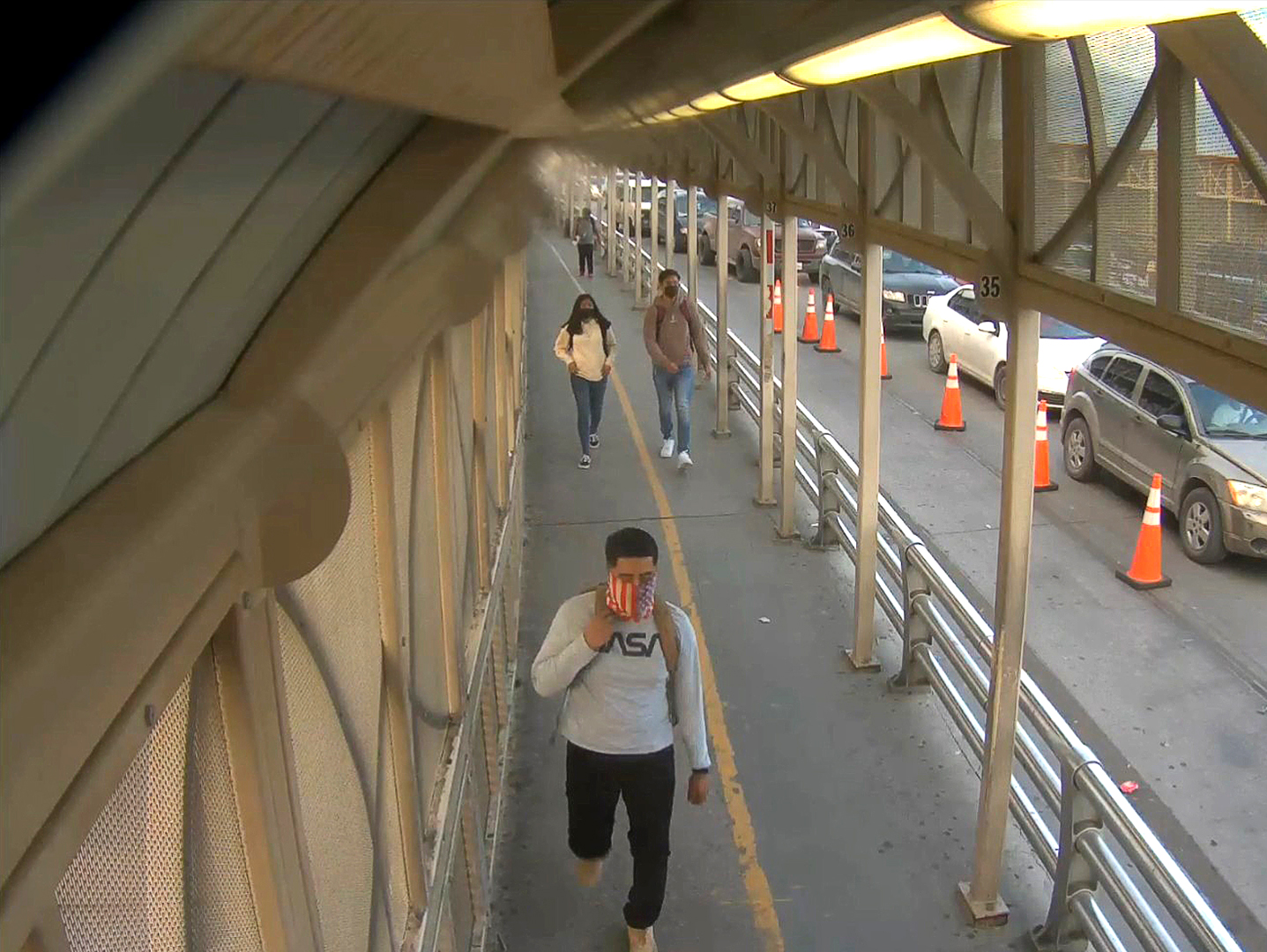

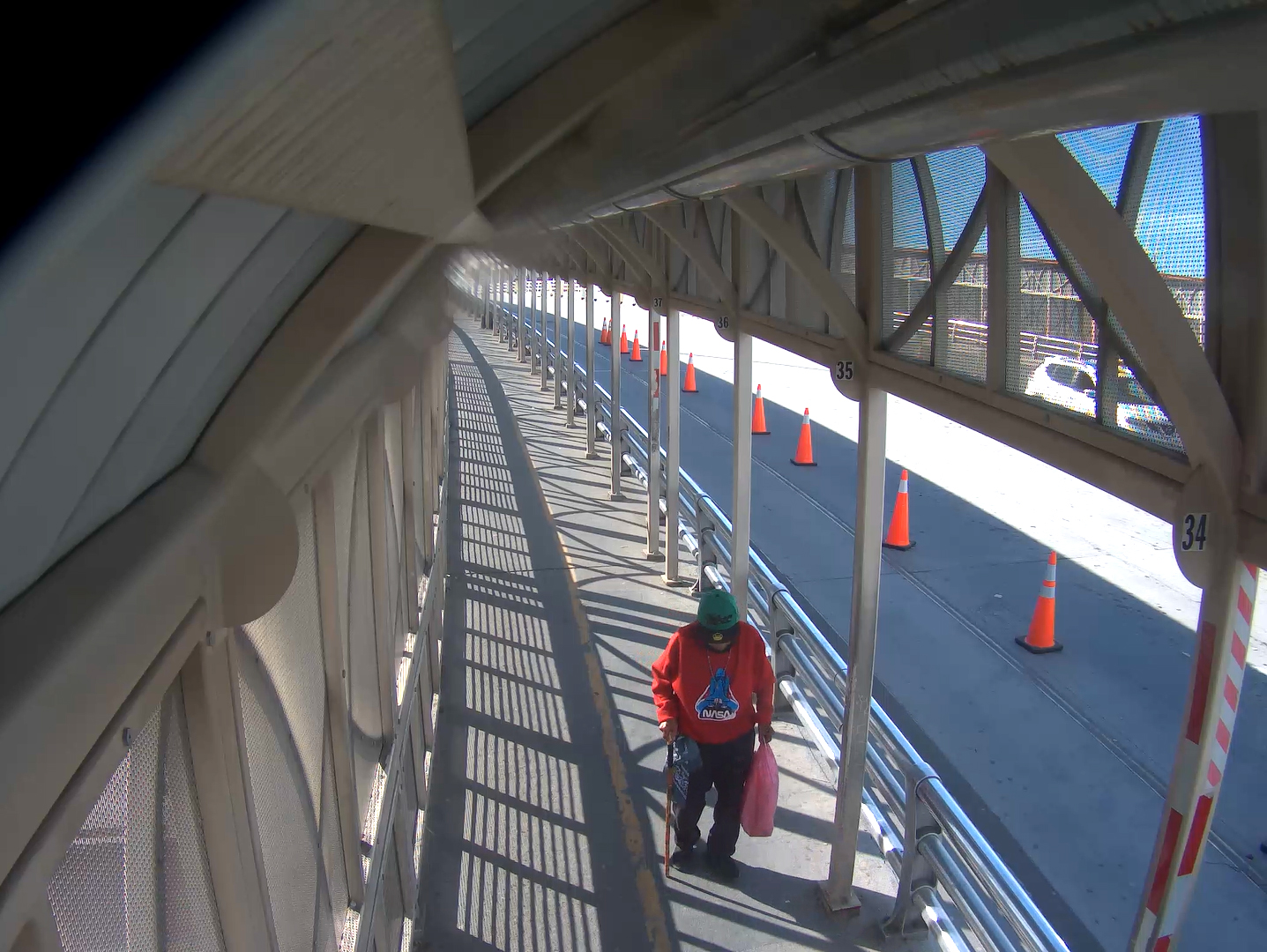
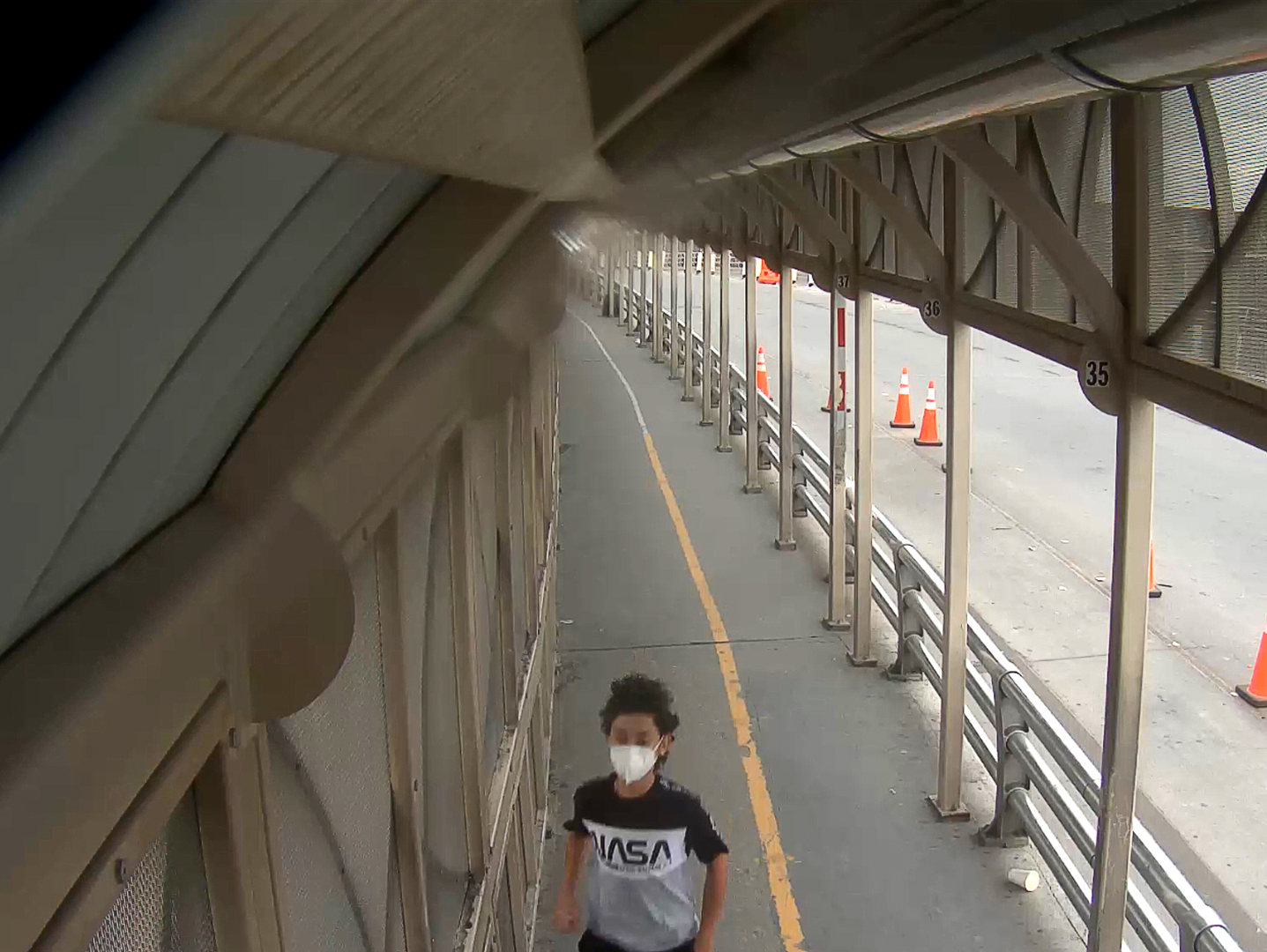
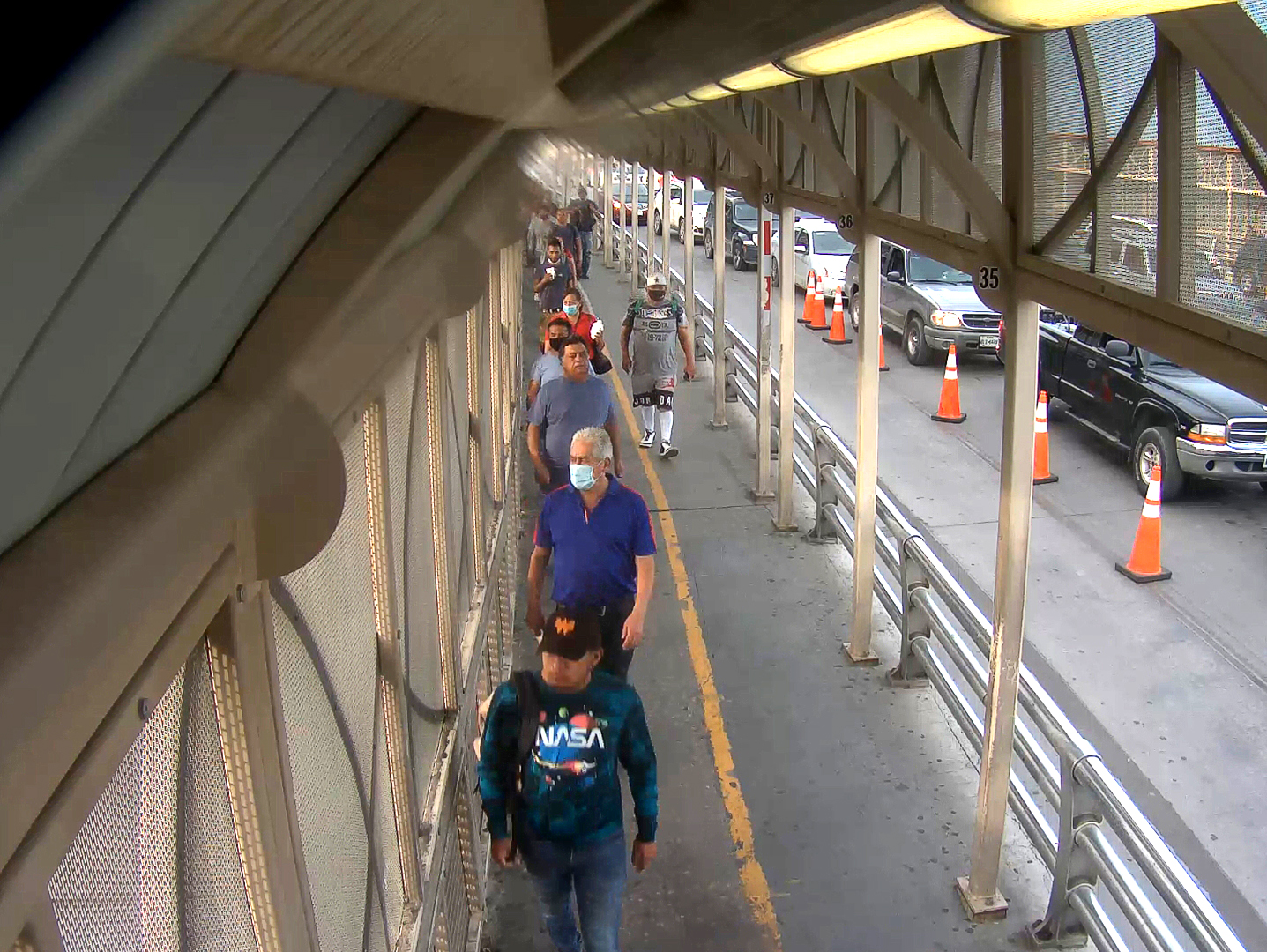
FAST FOOD
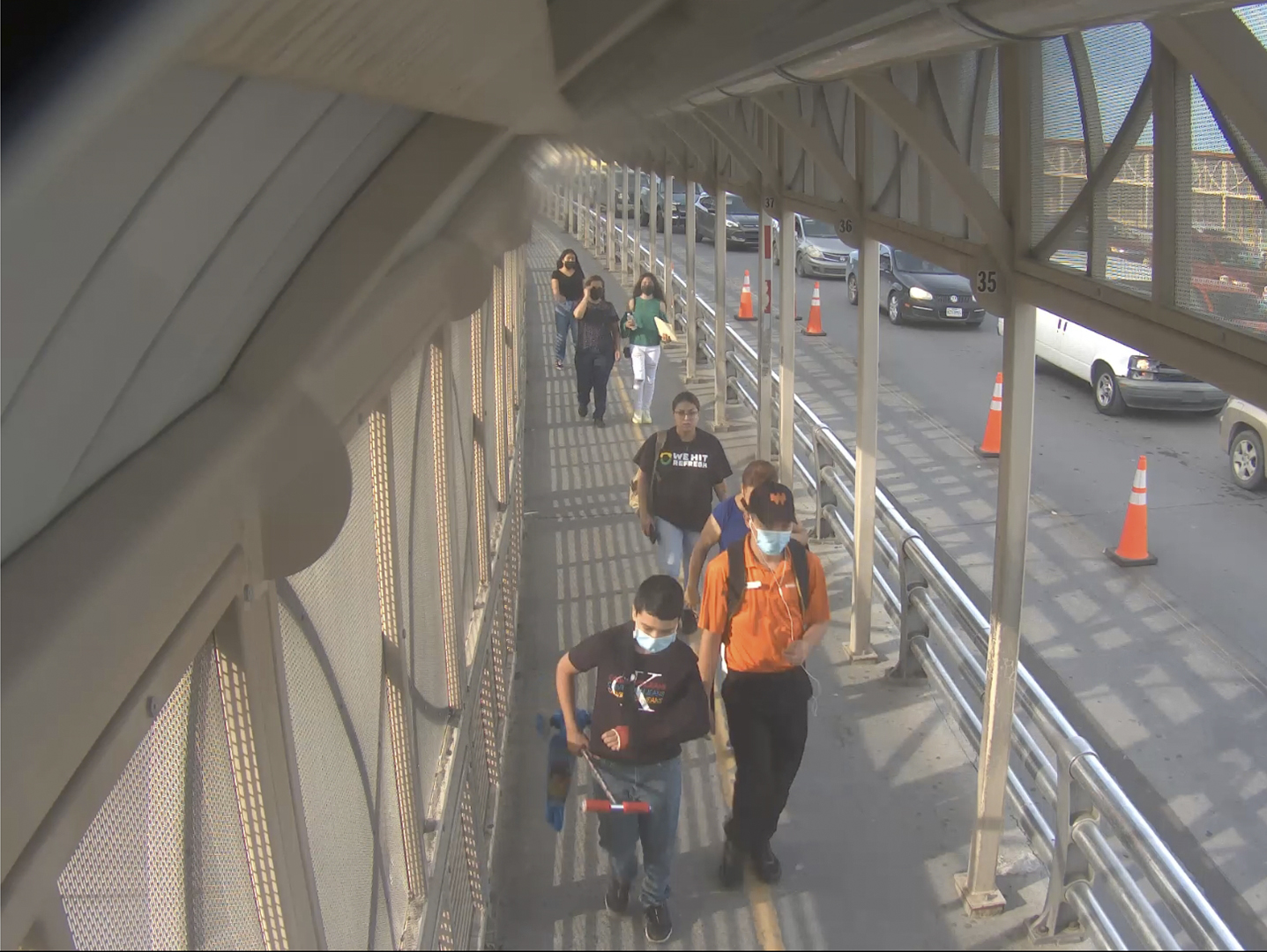
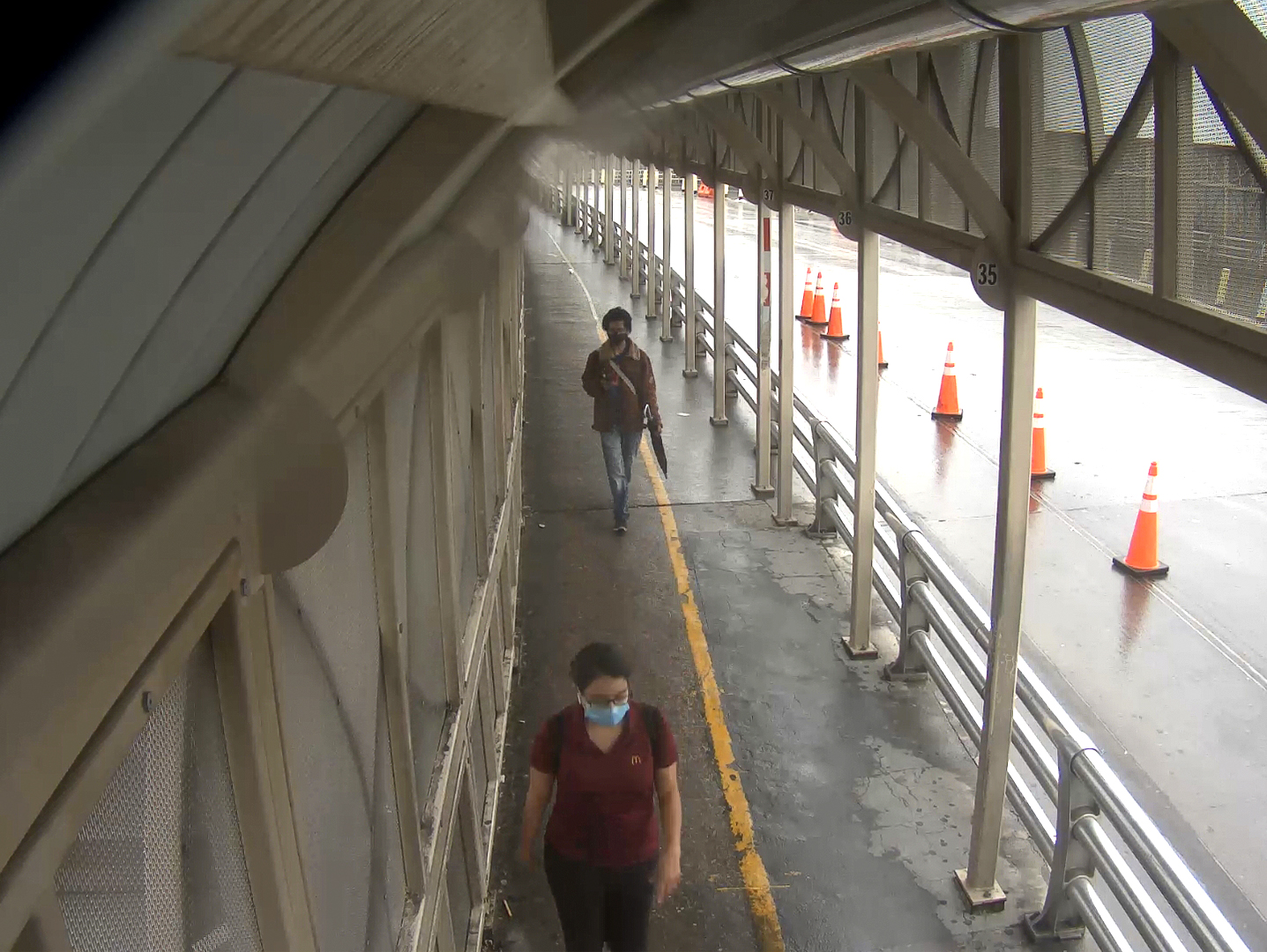
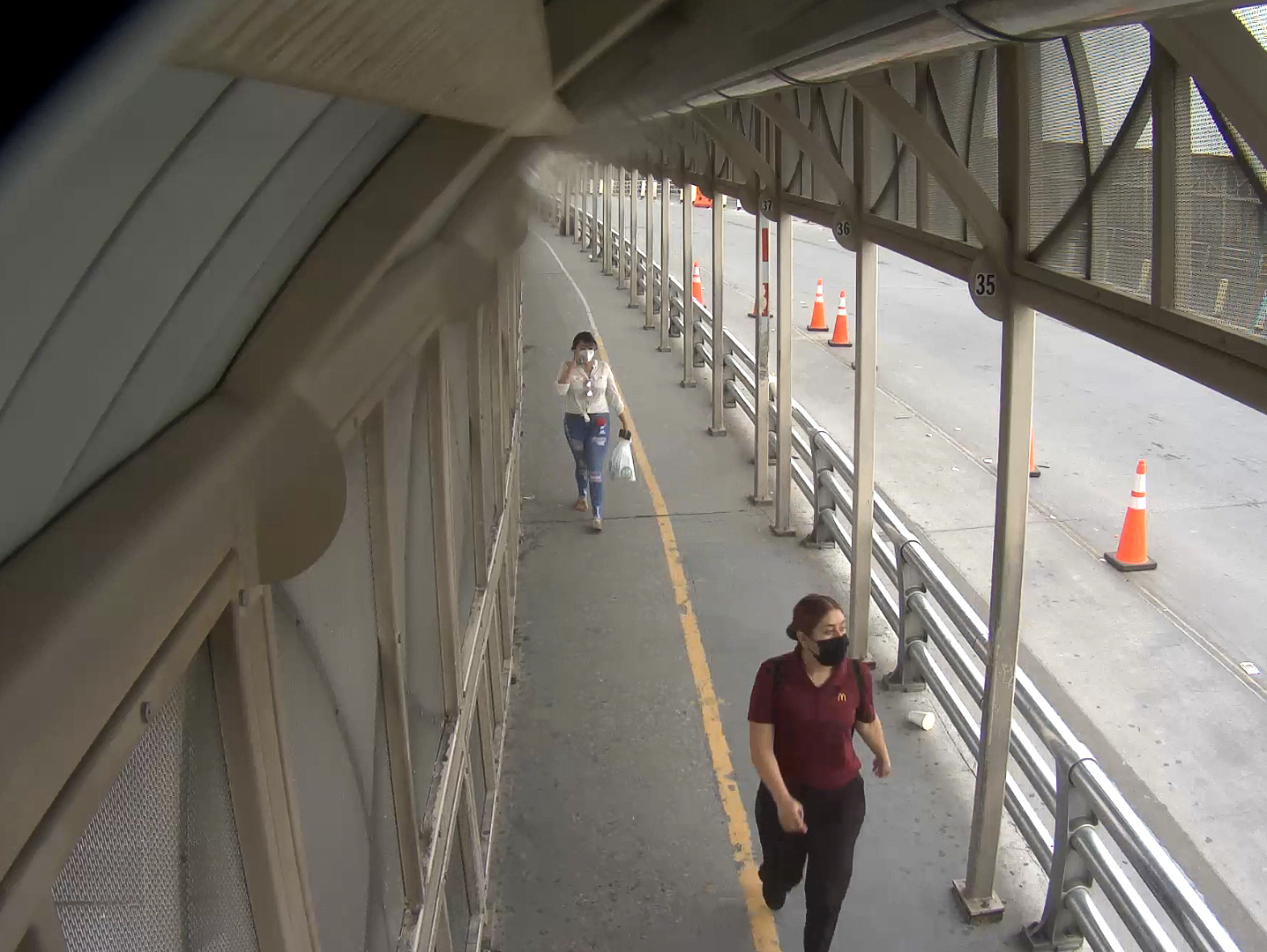
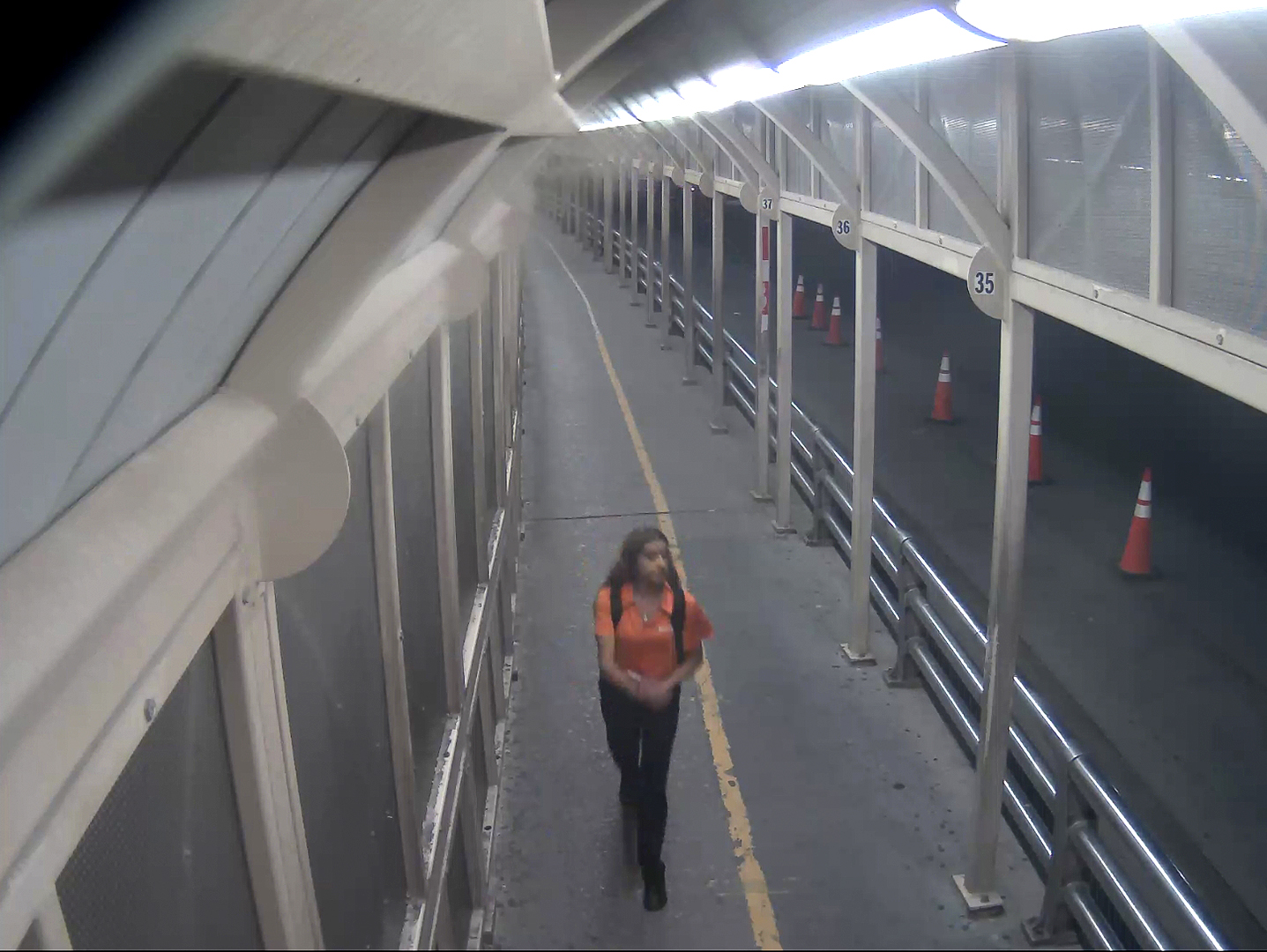
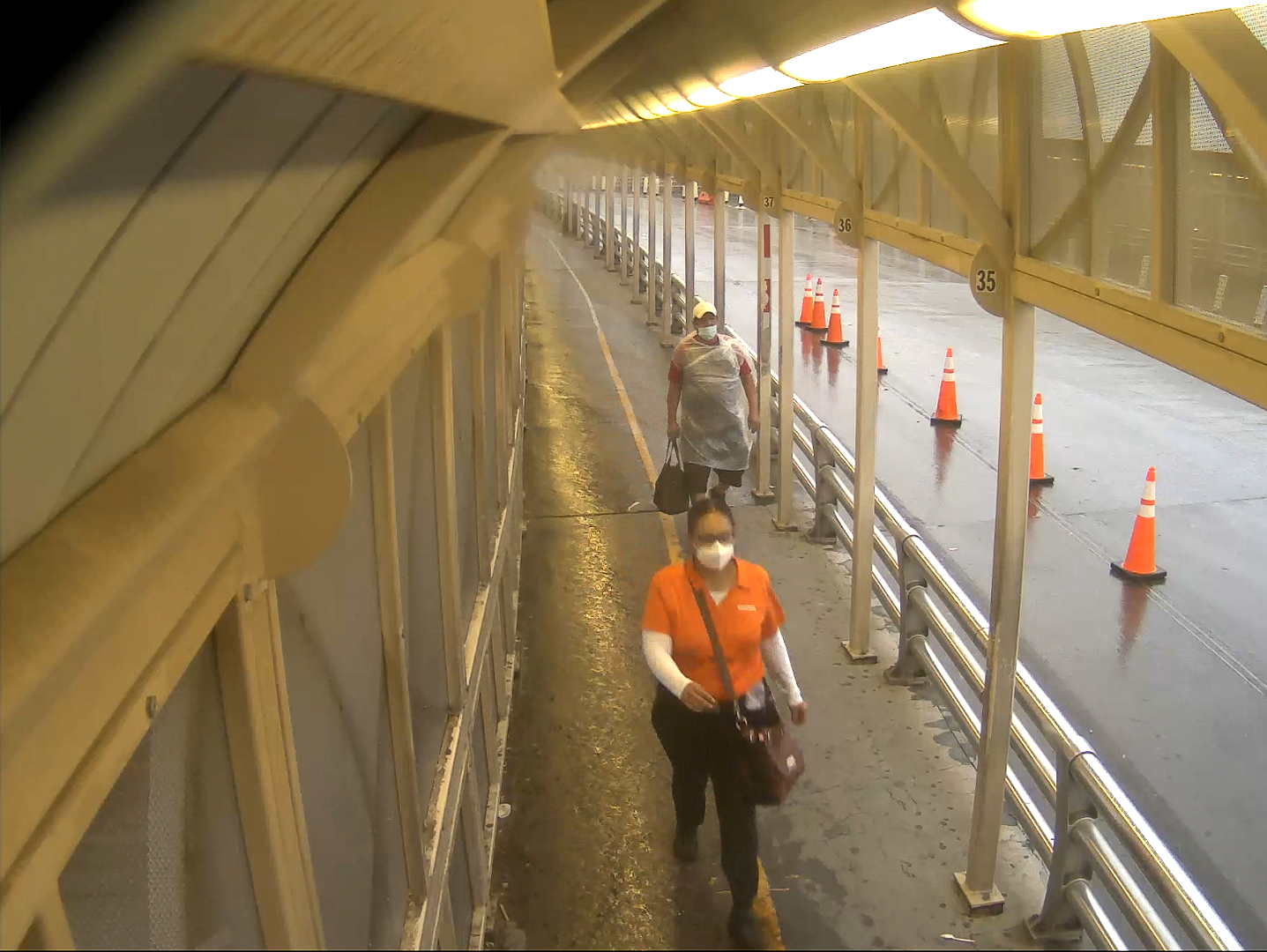
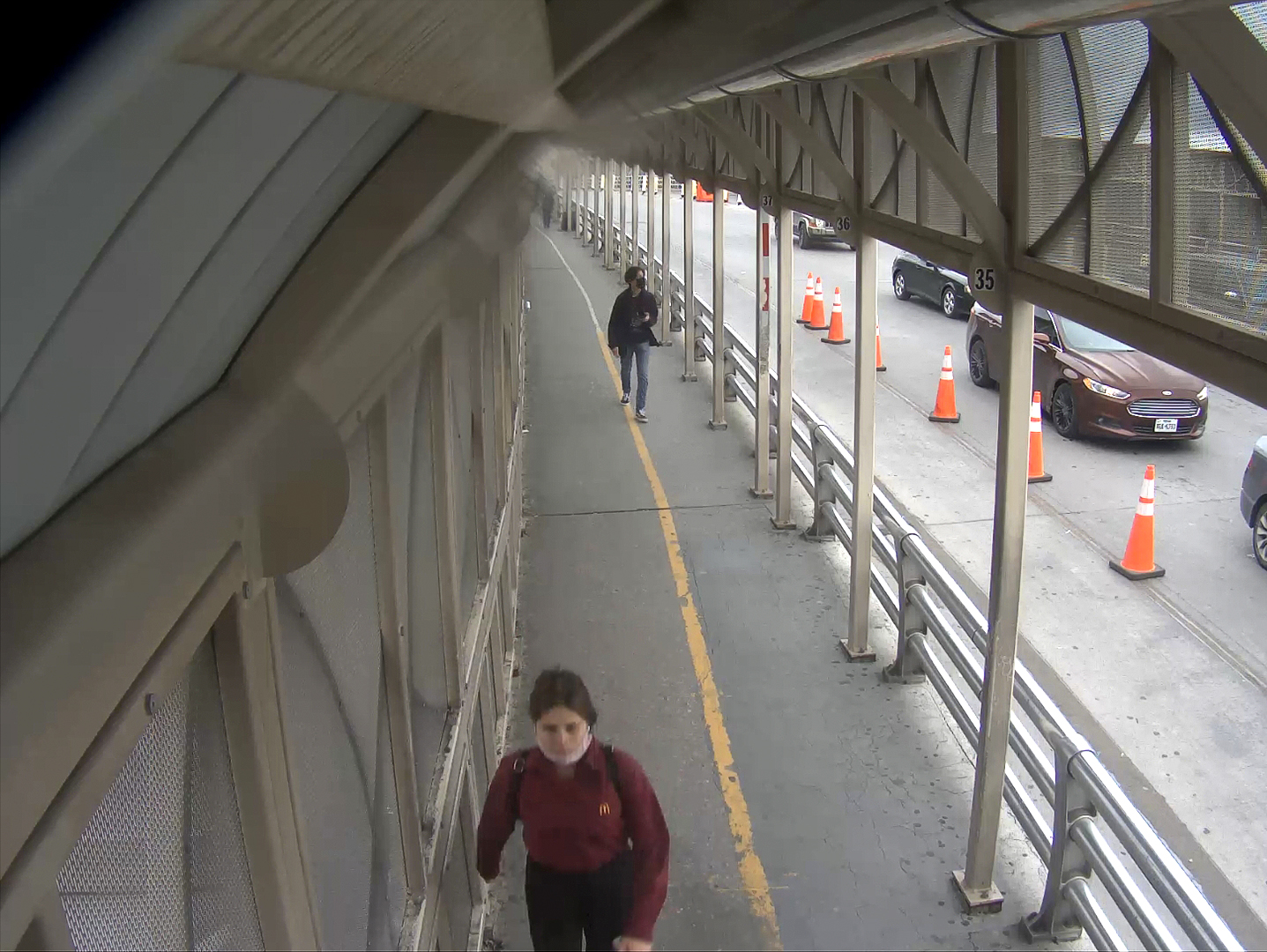
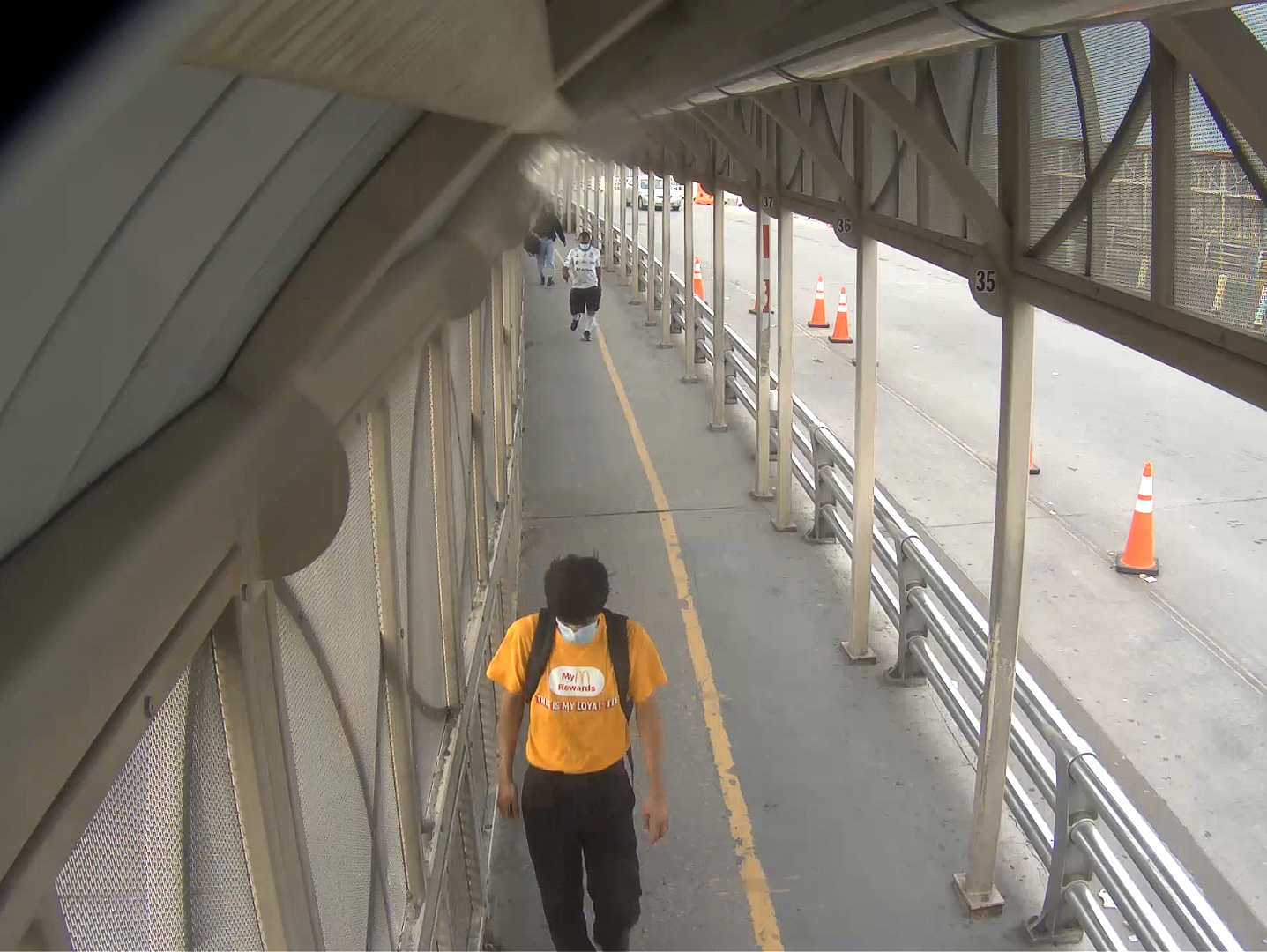
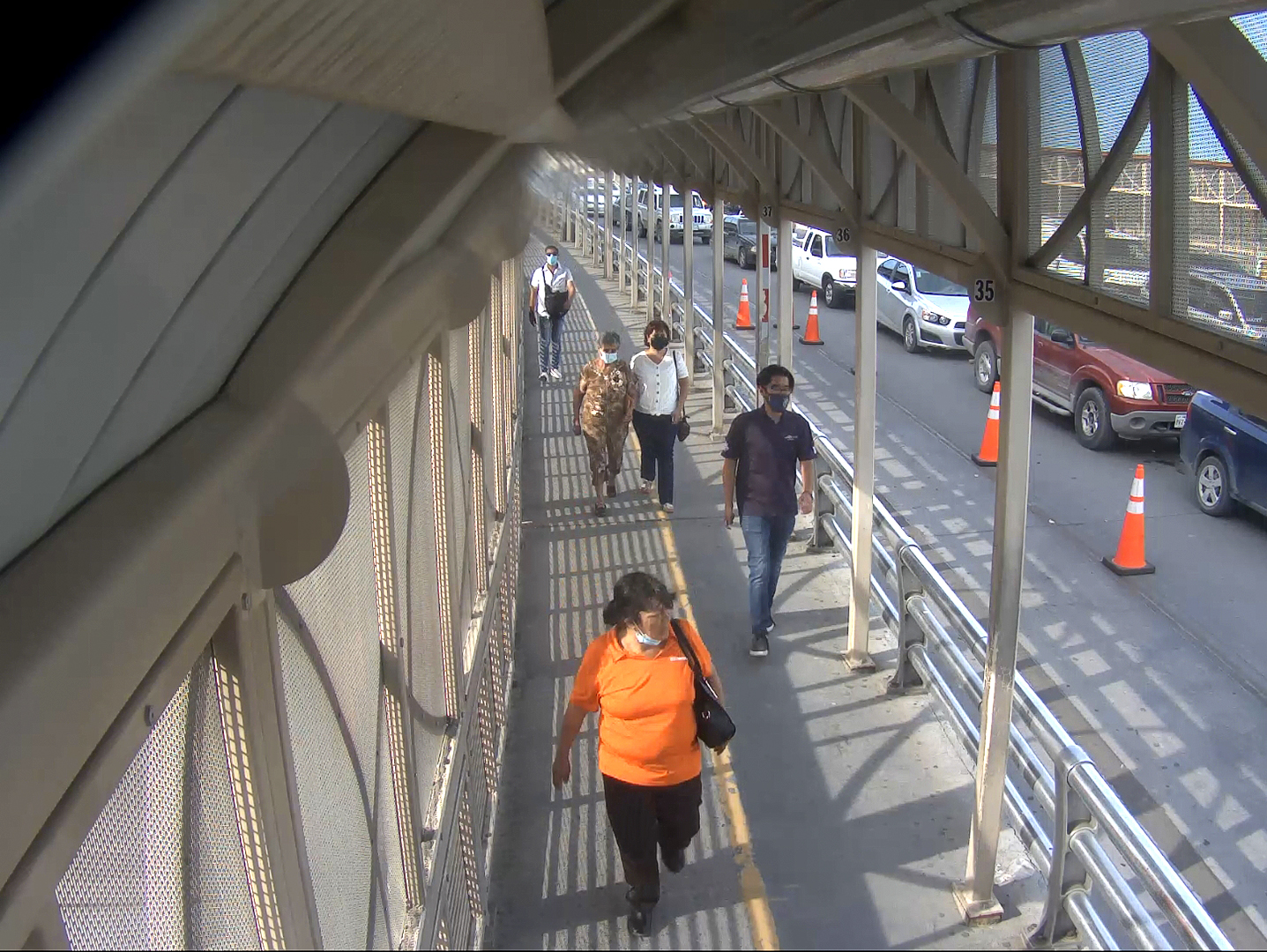
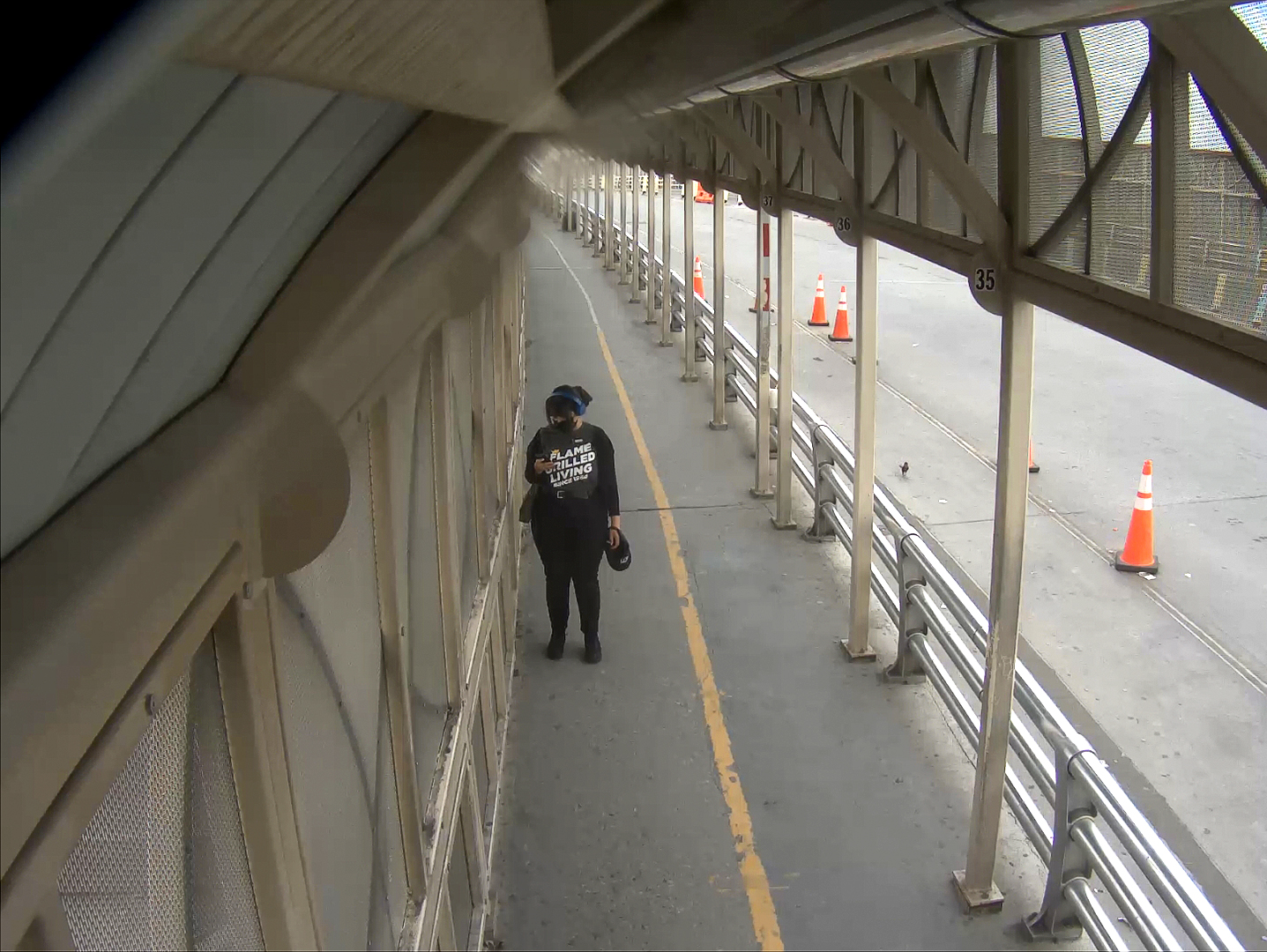
DOGS
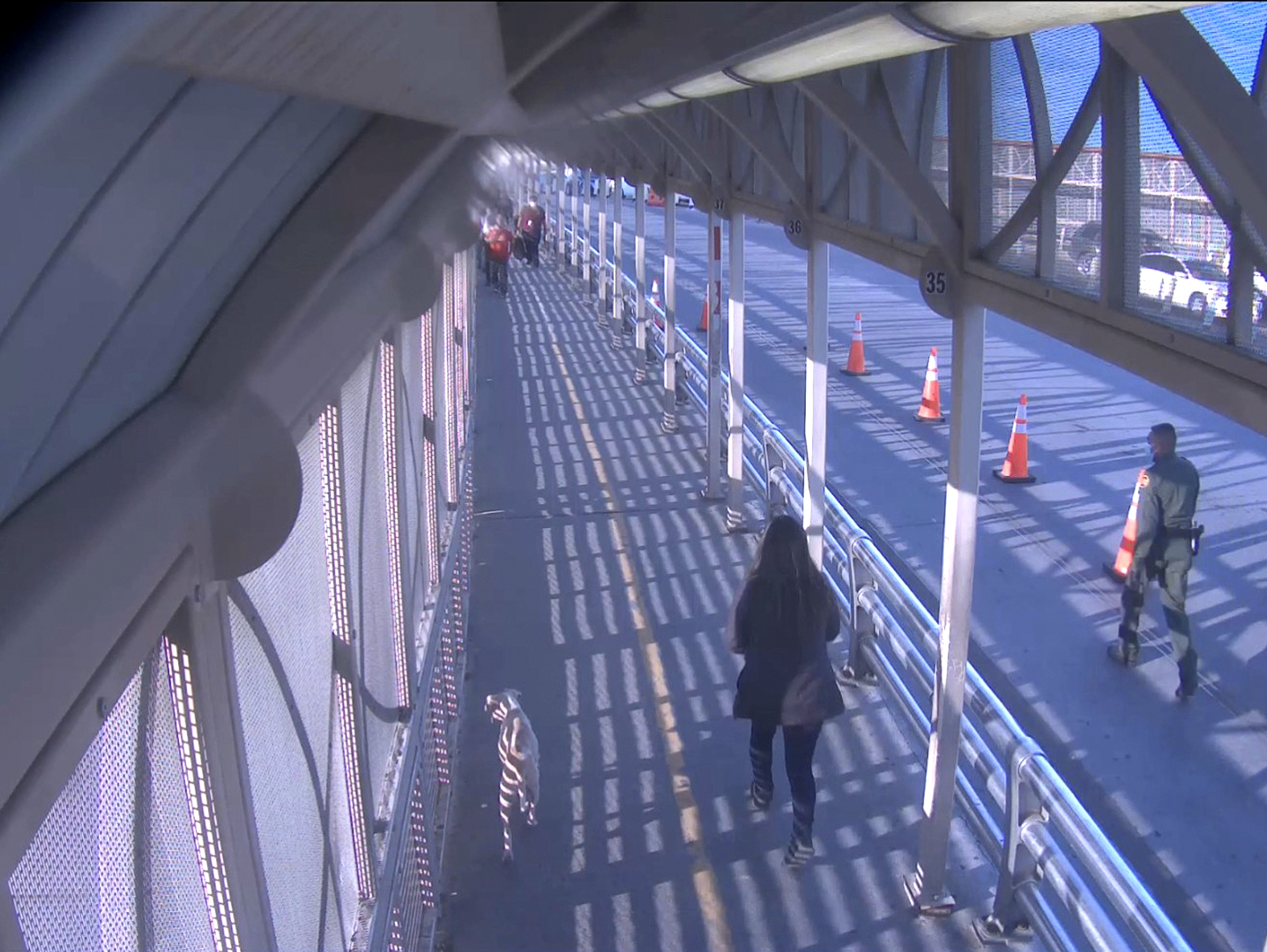

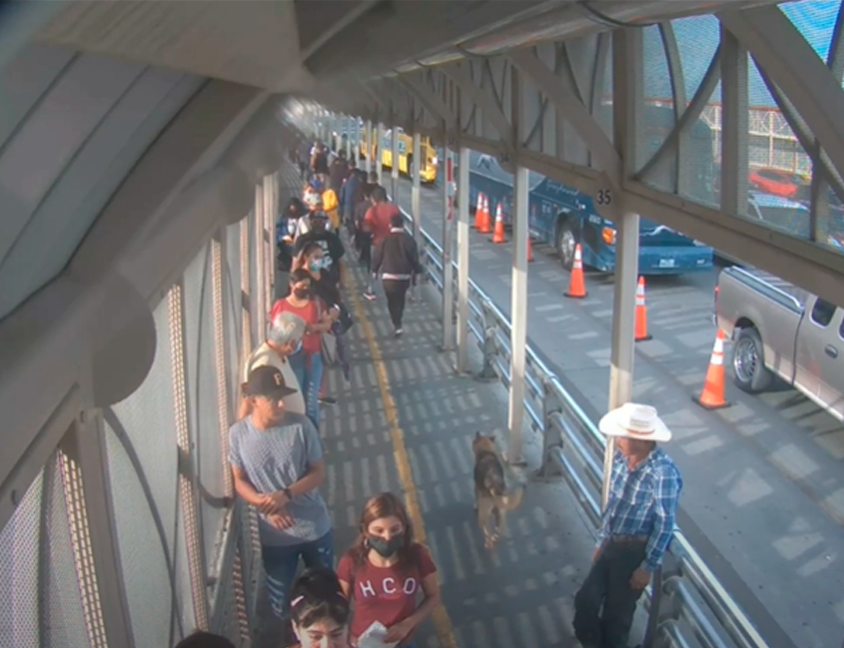
During this process, I discovered that the same camera network used to watch the bridge is also linked to the El Paso Zoo. Both systems share a single logic of observation—spaces where visibility is constant, but memory is absent.
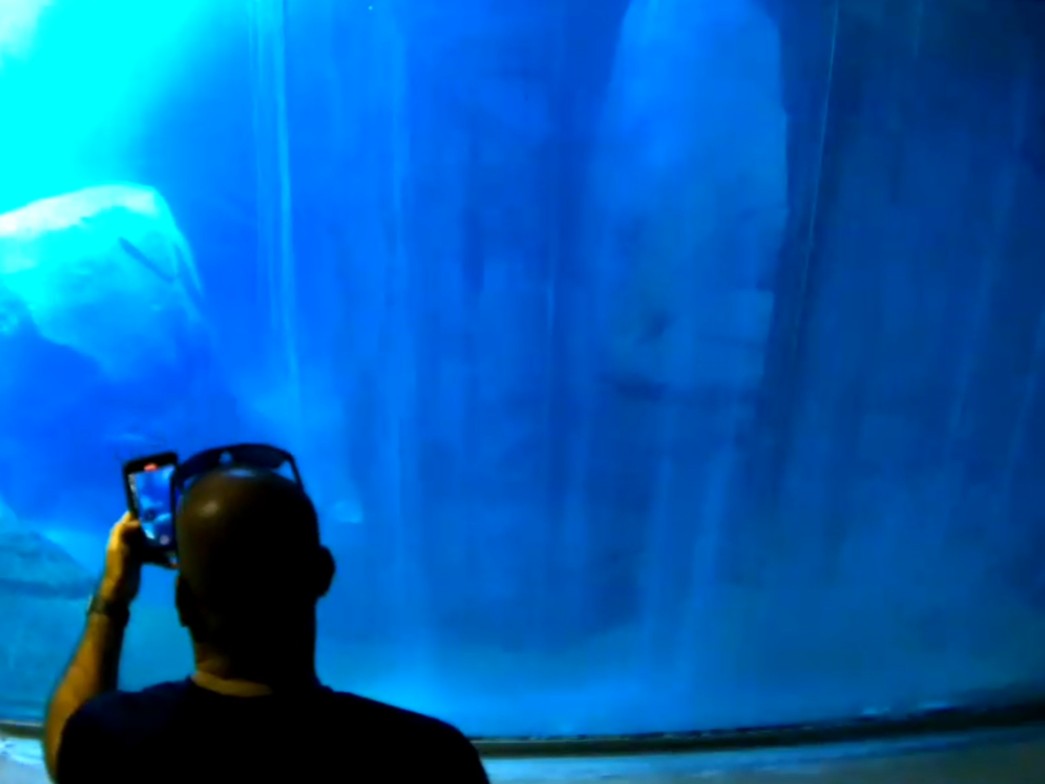

As the research developed, the archive extended into other forms of making. While reviewing declassified FOIA documents, I found an internal DHS report where a CBP officer joked that if agents “felt threatened, they can beat that tonk like a piñata until candy comes out.” That phrase became a turning point in the project. I built a surveillance camera piñata covered in metallic space blankets, and later crossed the bridge carrying other piñatas—an alien and a NASA rocket—referencing how border language and humor often disguise violence.
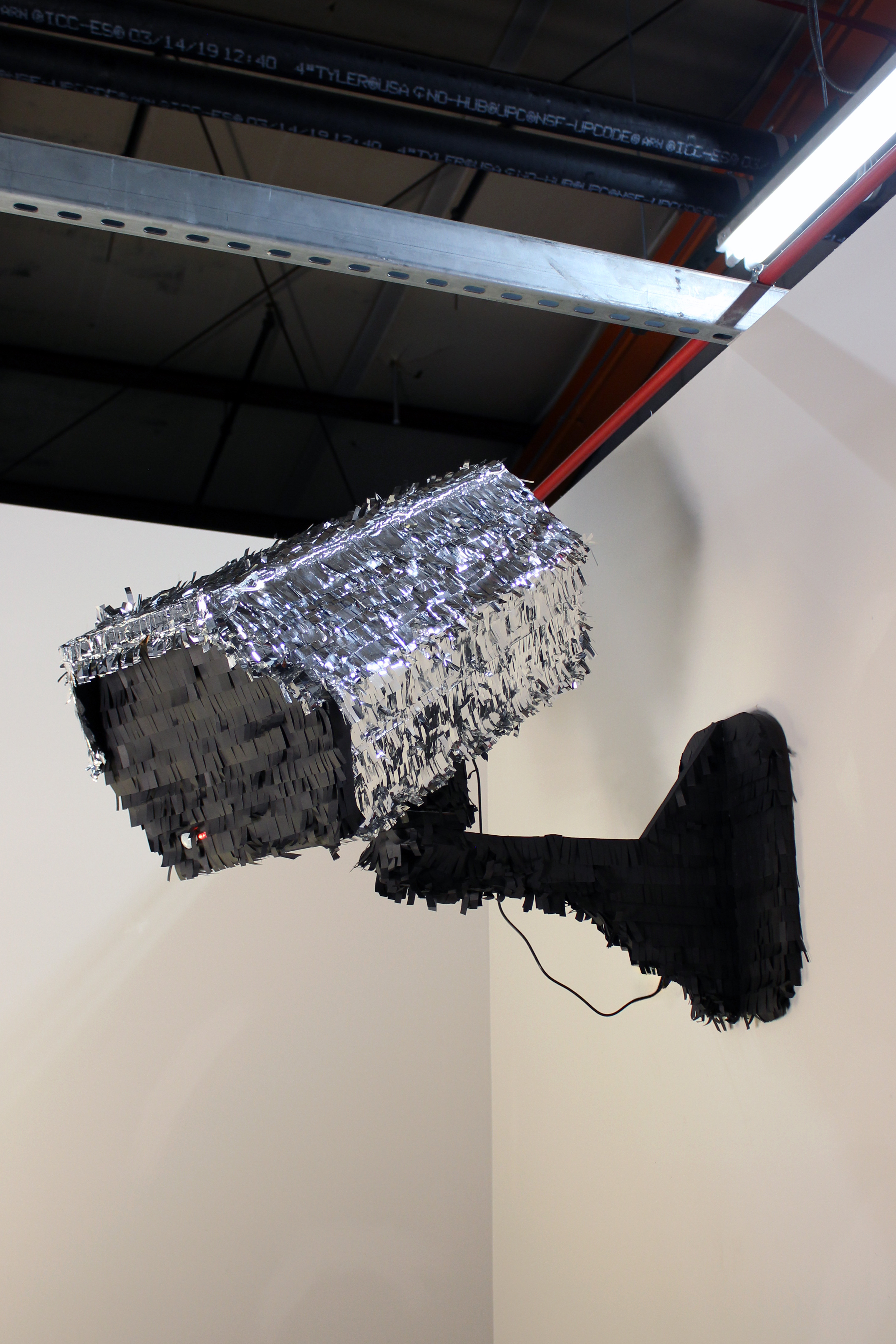
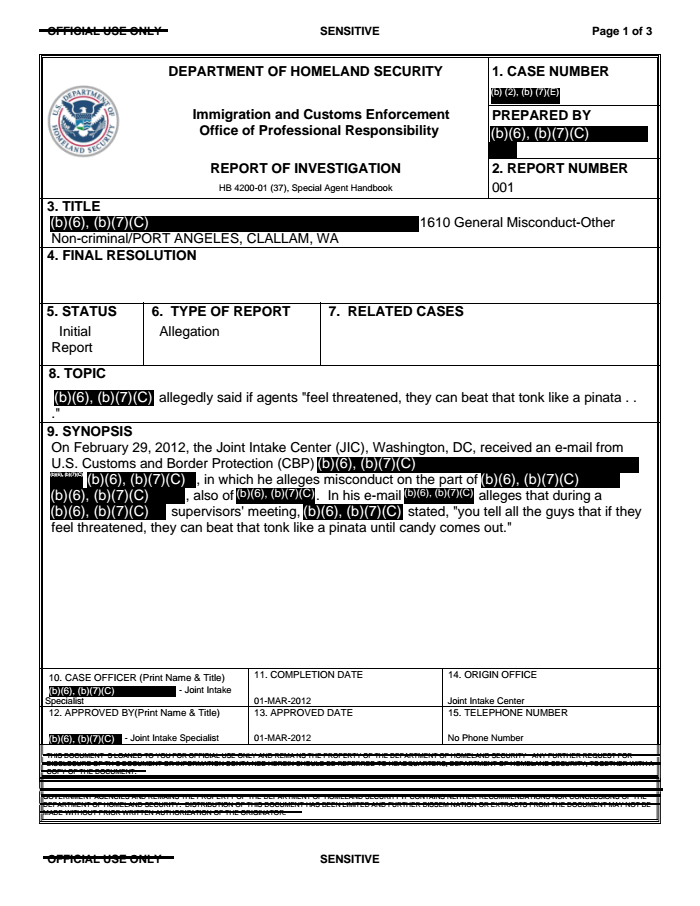
Space blanket, cardboard, paper, wood, LED, infrared sensor, rotating engine, Arduino. 27 x 35 x 14 in ; 8.5 x 11 in. 2024
During these crossings I began wearing clothes that mirrored what I was seeing on the cameras: a sweatshirt reading RAZA, designed after NASA’s logo, or fast-food uniforms like those worn by workers who commute daily between Juárez and El Paso. These gestures became a way of inserting myself into the same visual system I had been documenting, testing how representation and identification circulate at the border.
Over time, the archive evolved beyond the act of recording. Some of the screenshots taken from the bridge livestream became the basis for new works: a piñata made from space blankets and a group of acrylic pieces depicting migrant silhouettes extracted from the video feed. These visual experiments extend the project beyond documentation, translating the ephemerality of surveillance into material form.
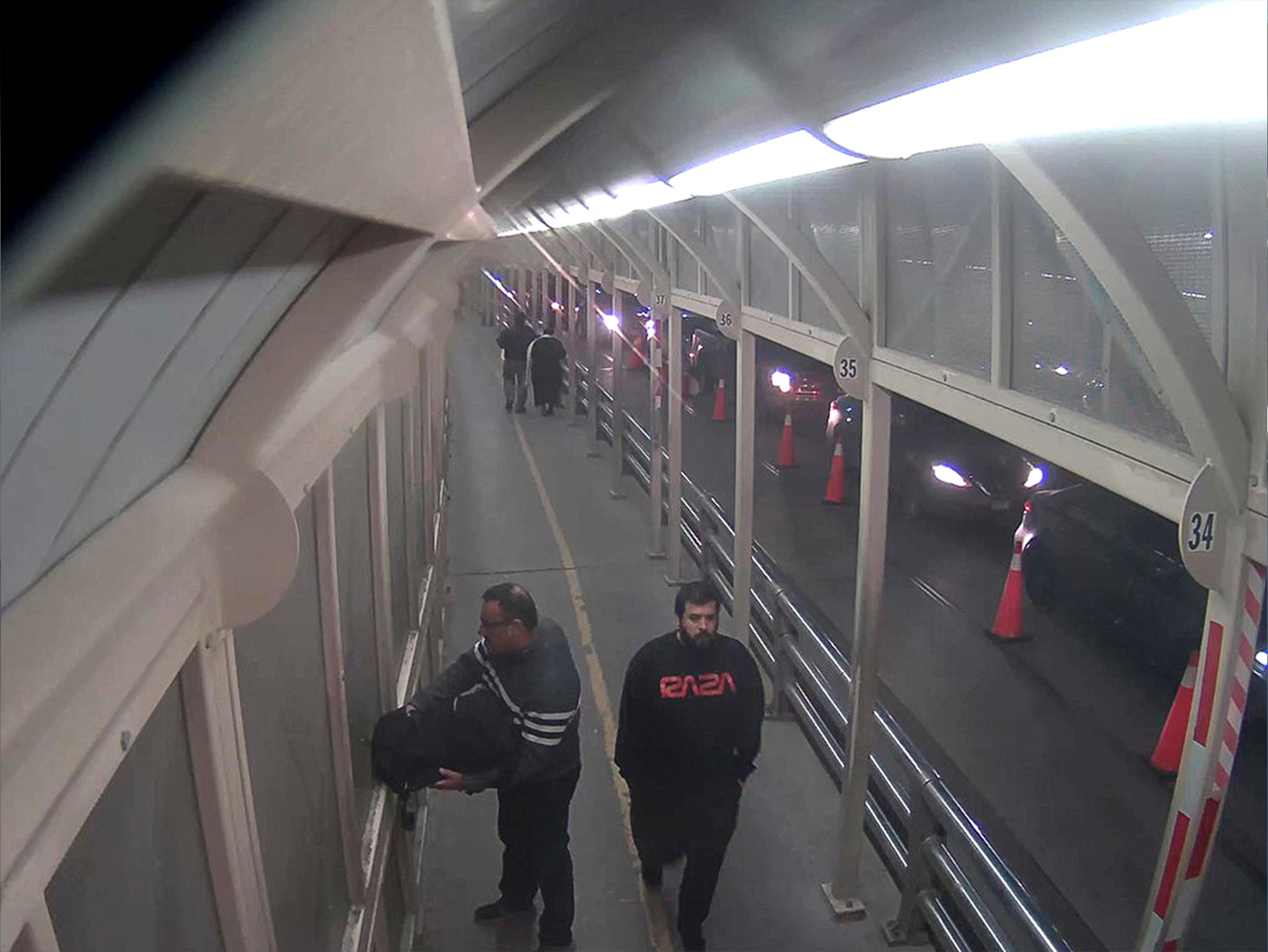
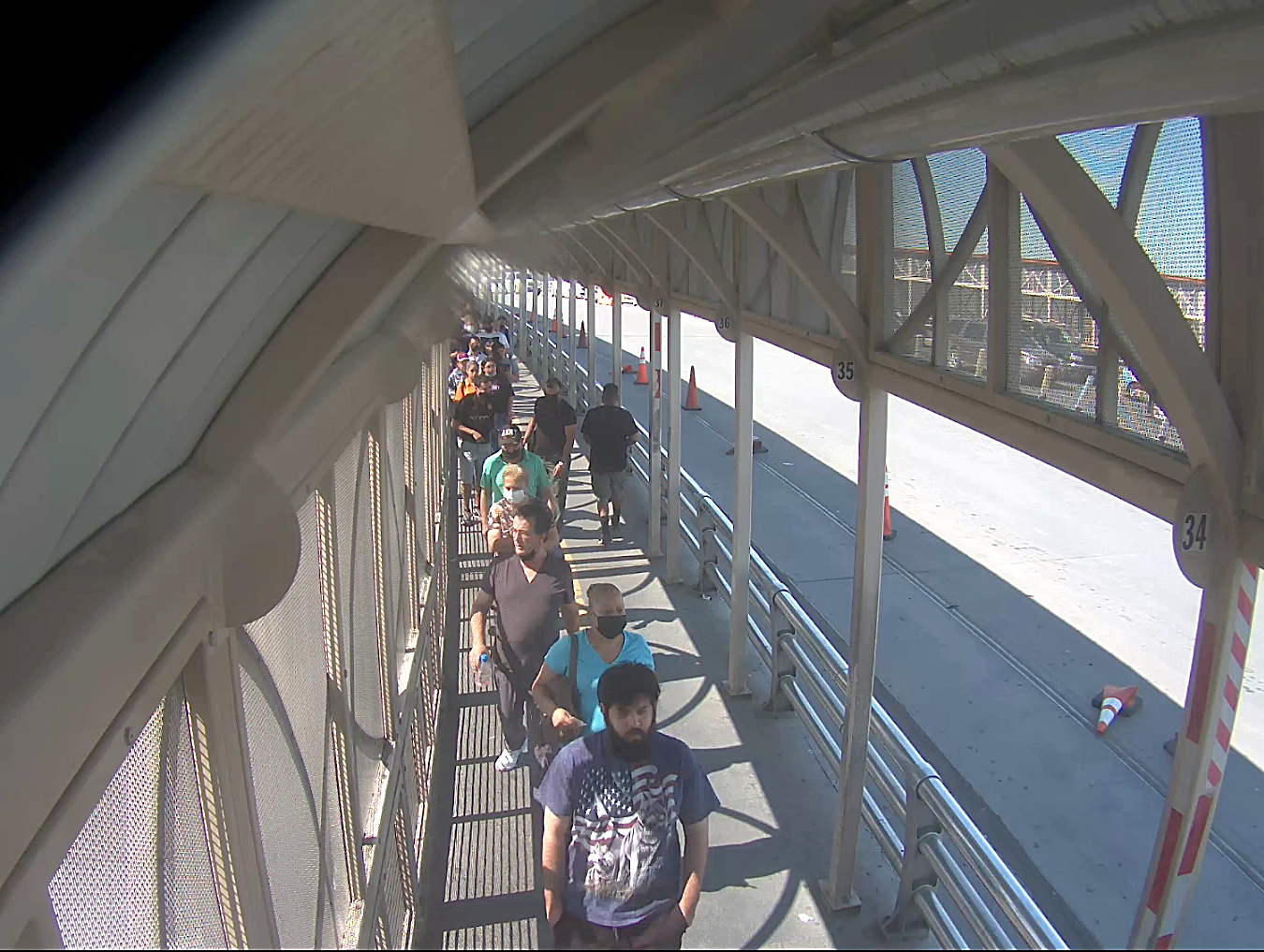
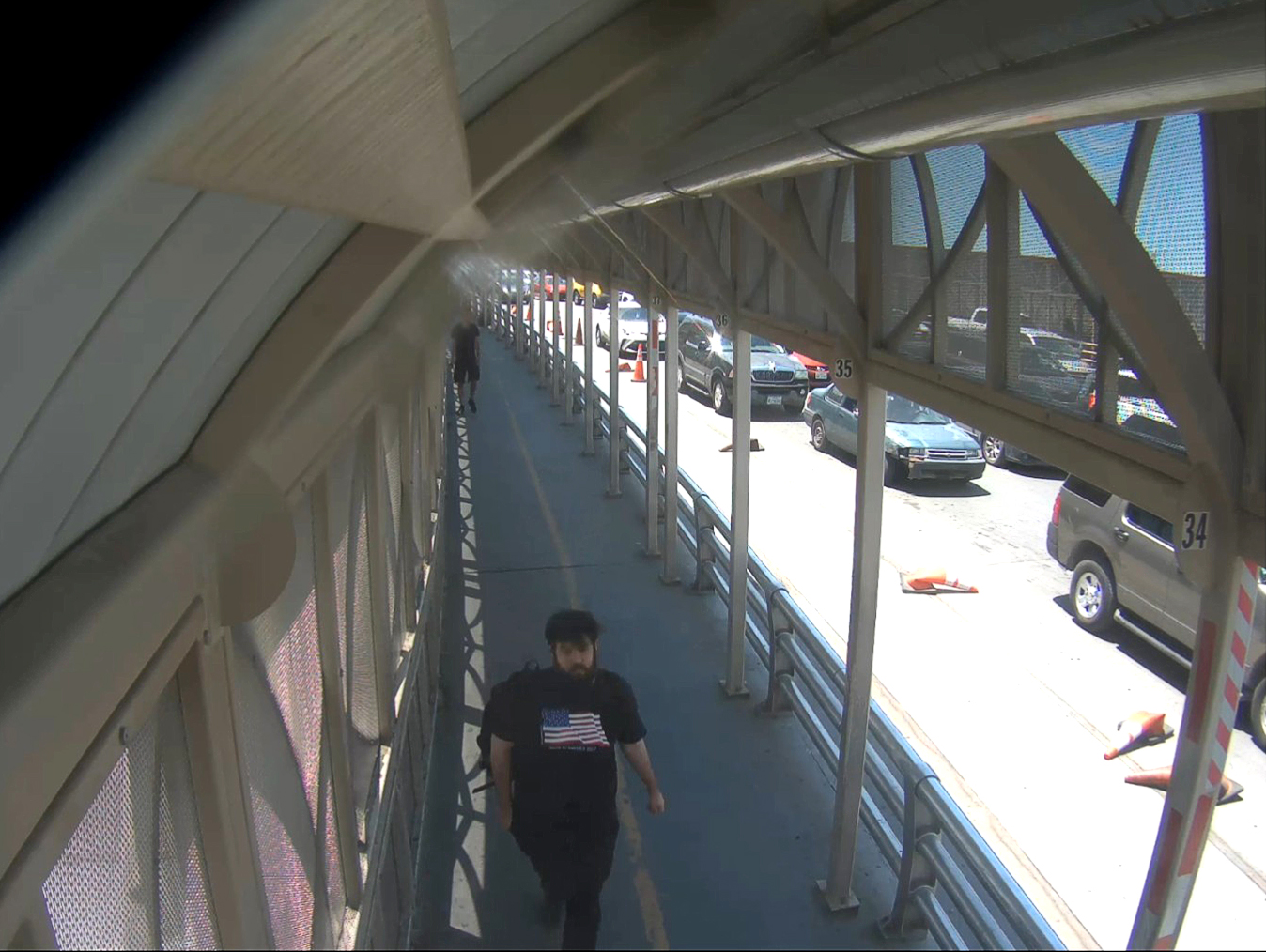


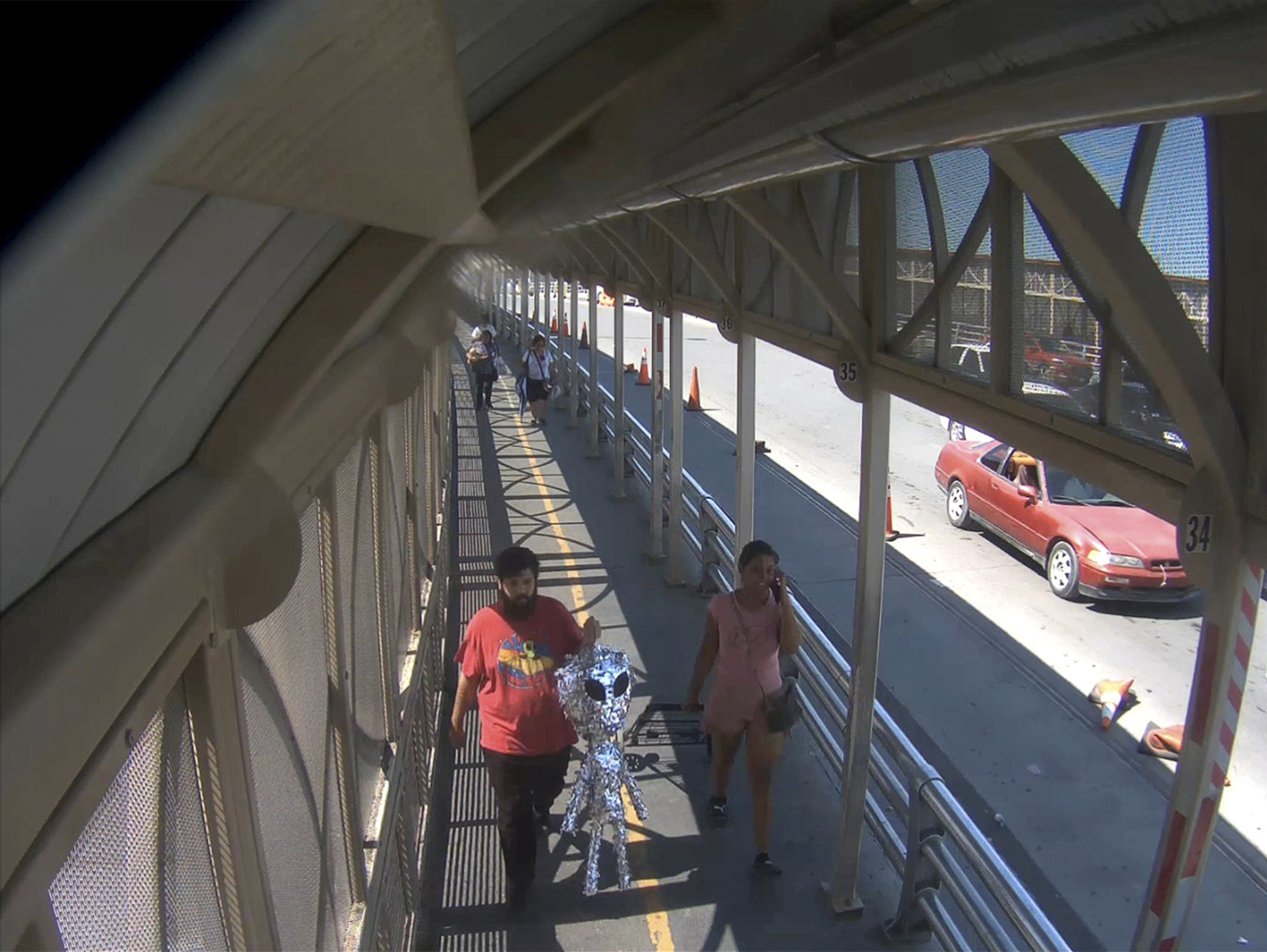

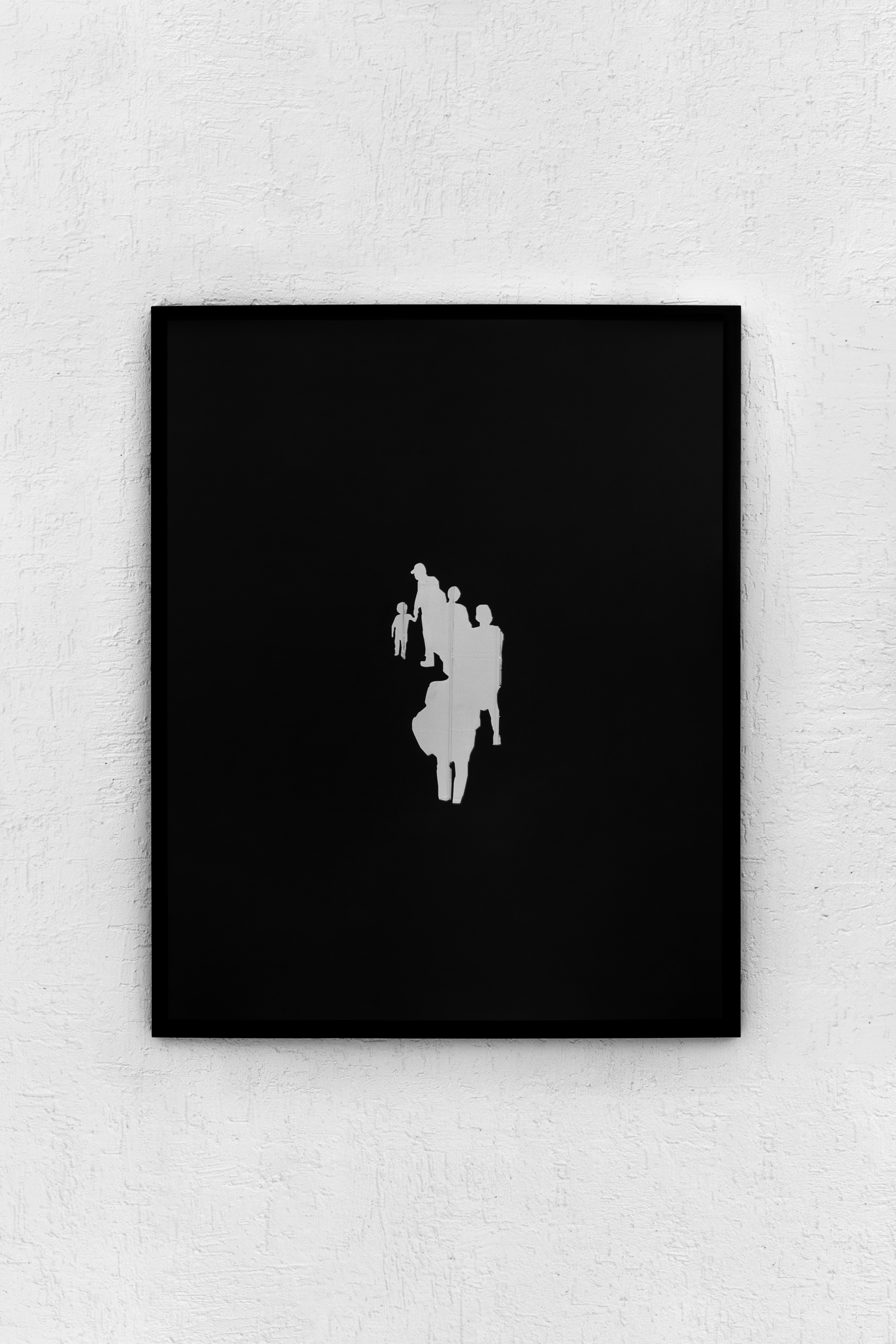
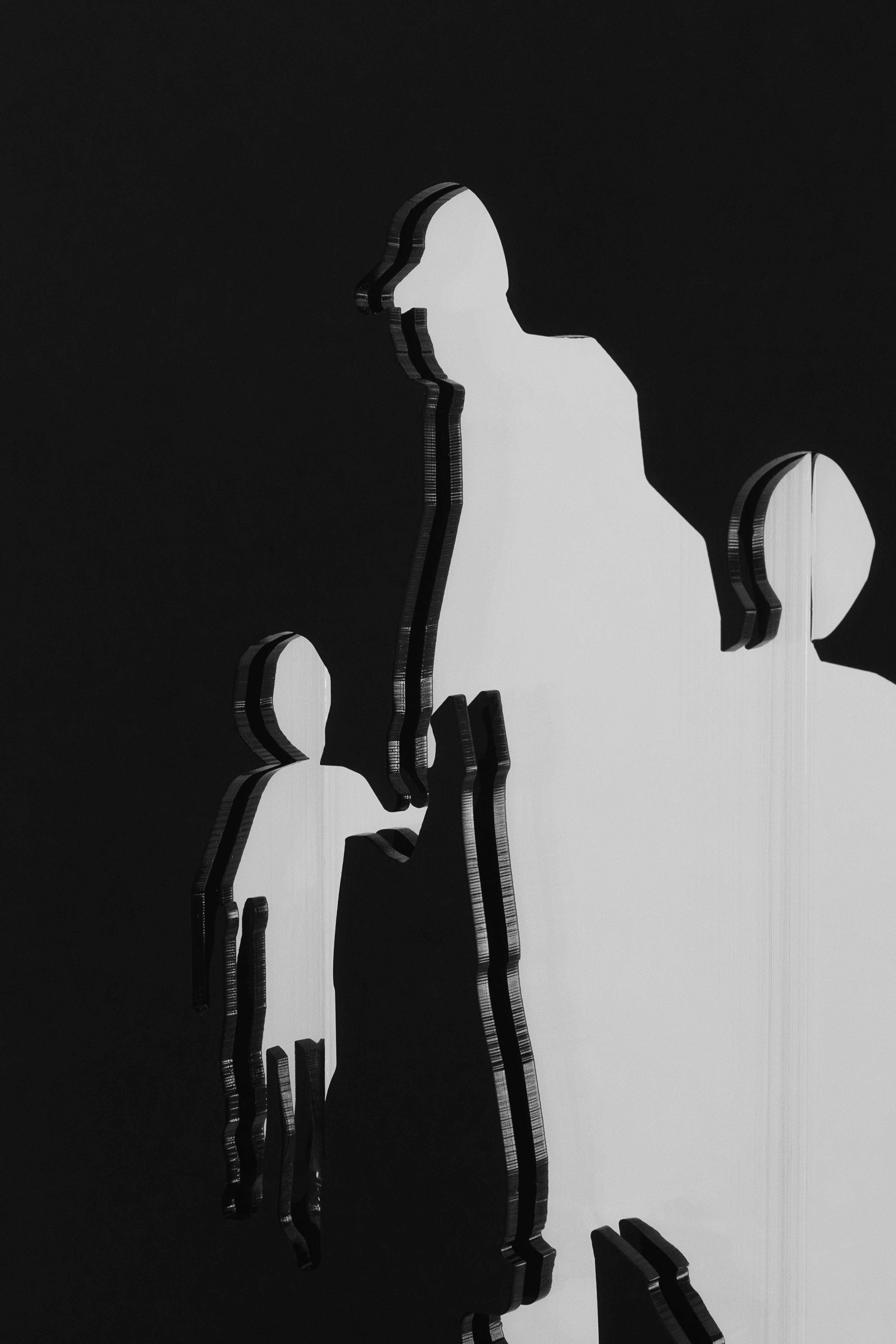
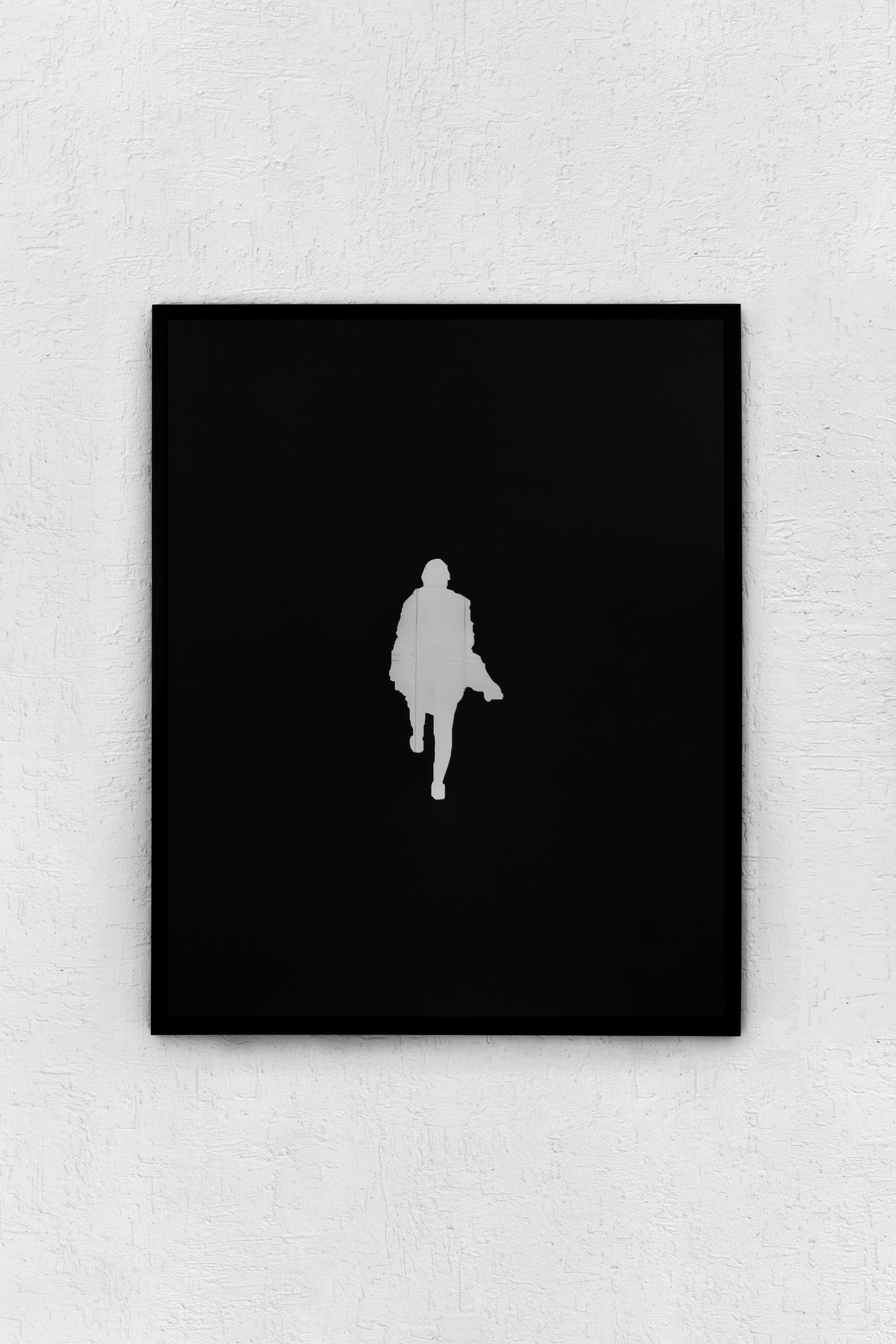
Paso del Norte Dummy
Paso del Norte dummy brings together stills from border livestreams, government documents, news archives, and staged photographs made between Ciudad Juárez and El Paso. Structured in six chapters, the book examines how migration, surveillance, and everyday gestures unfold within a system built to watch but not to remember.
Each chapter focuses on a different layer of the border.
Viral Dogs gathers images of animals walking beside deportees and the news stories that turned them into viral symbols.
NASA / RAZA explores how migrants wear logos and national emblems as both camouflage and identity.
Have it your way looks at fast-food labor and daily crossings through uniforms and branded spaces.
You tell all the guys... follows piñatas carried across the bridge, objects that move between celebration and violence.
Me quité la manta térmica... revisits the events of March 12 and the detention-center fire that killed forty people.
M.M.P. & Title 42 closes the sequence with internal policy documents paired with scenes of deportations mid-bridge.
Throughout the book, livestream stills are interrupted by redacted text, server errors, and fragments of personal reflection. The same camera network that watches the bridge also streams from the El Paso Zoo—linking control, entertainment, and exposure within a single field of view.
Each chapter focuses on a different layer of the border.
Viral Dogs gathers images of animals walking beside deportees and the news stories that turned them into viral symbols.
NASA / RAZA explores how migrants wear logos and national emblems as both camouflage and identity.
Have it your way looks at fast-food labor and daily crossings through uniforms and branded spaces.
You tell all the guys... follows piñatas carried across the bridge, objects that move between celebration and violence.
Me quité la manta térmica... revisits the events of March 12 and the detention-center fire that killed forty people.
M.M.P. & Title 42 closes the sequence with internal policy documents paired with scenes of deportations mid-bridge.
Throughout the book, livestream stills are interrupted by redacted text, server errors, and fragments of personal reflection. The same camera network that watches the bridge also streams from the El Paso Zoo—linking control, entertainment, and exposure within a single field of view.
Awards:
2025 Finalist of Image Vevey Book Award 2025 / 2026.
Info:
Page count – 144 pages, and 14 pages of foldouts, totaling 158 pages
trim size – 12,6 cm w X 21 cm h
printing – 4+4 offset
binding – Swiss binding, white binding thread
inlay paper – Munken Print white 115g
cover material – Geltex absolute black
finishing – illustrations (front cover and spine): silver foil stamping
titles (spine): black foil stamping
Concept
Alejandro “Luperca” Morales
Editing and sequencing
Alejandro “Luperca” Morales and Fernando Gallegos
Design and layout – Fernando Gallegos
Texts
Alejandro "Luperca" Morales and Alice Driver
trim size – 12,6 cm w X 21 cm h
printing – 4+4 offset
binding – Swiss binding, white binding thread
inlay paper – Munken Print white 115g
cover material – Geltex absolute black
finishing – illustrations (front cover and spine): silver foil stamping
titles (spine): black foil stamping
Concept
Alejandro “Luperca” Morales
Editing and sequencing
Alejandro “Luperca” Morales and Fernando Gallegos
Design and layout – Fernando Gallegos
Texts
Alejandro "Luperca" Morales and Alice Driver